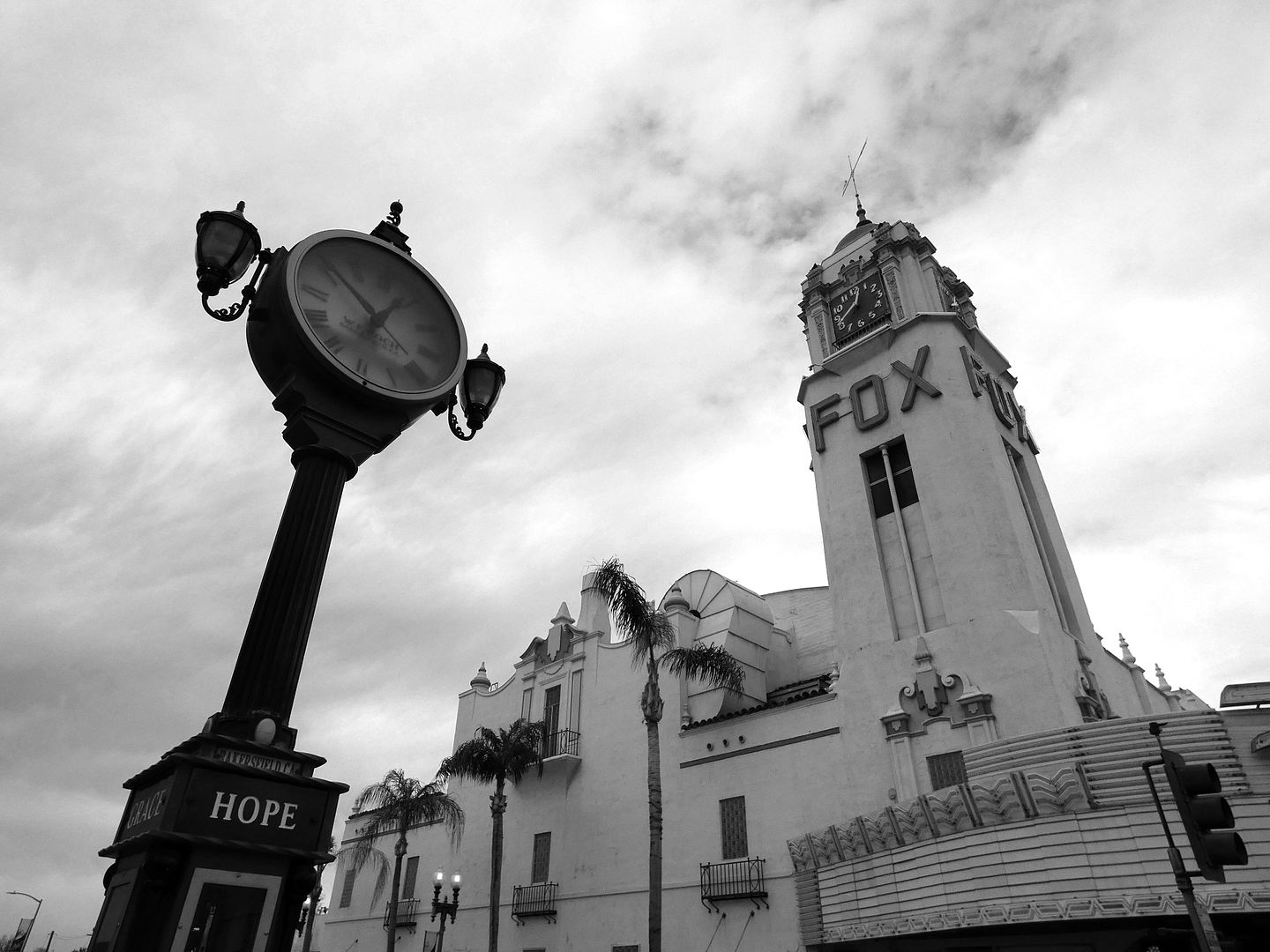
...and also that it fell off the radar enough for that palace to be left alone for over 90 years and be spared from the wrecking ball and development.
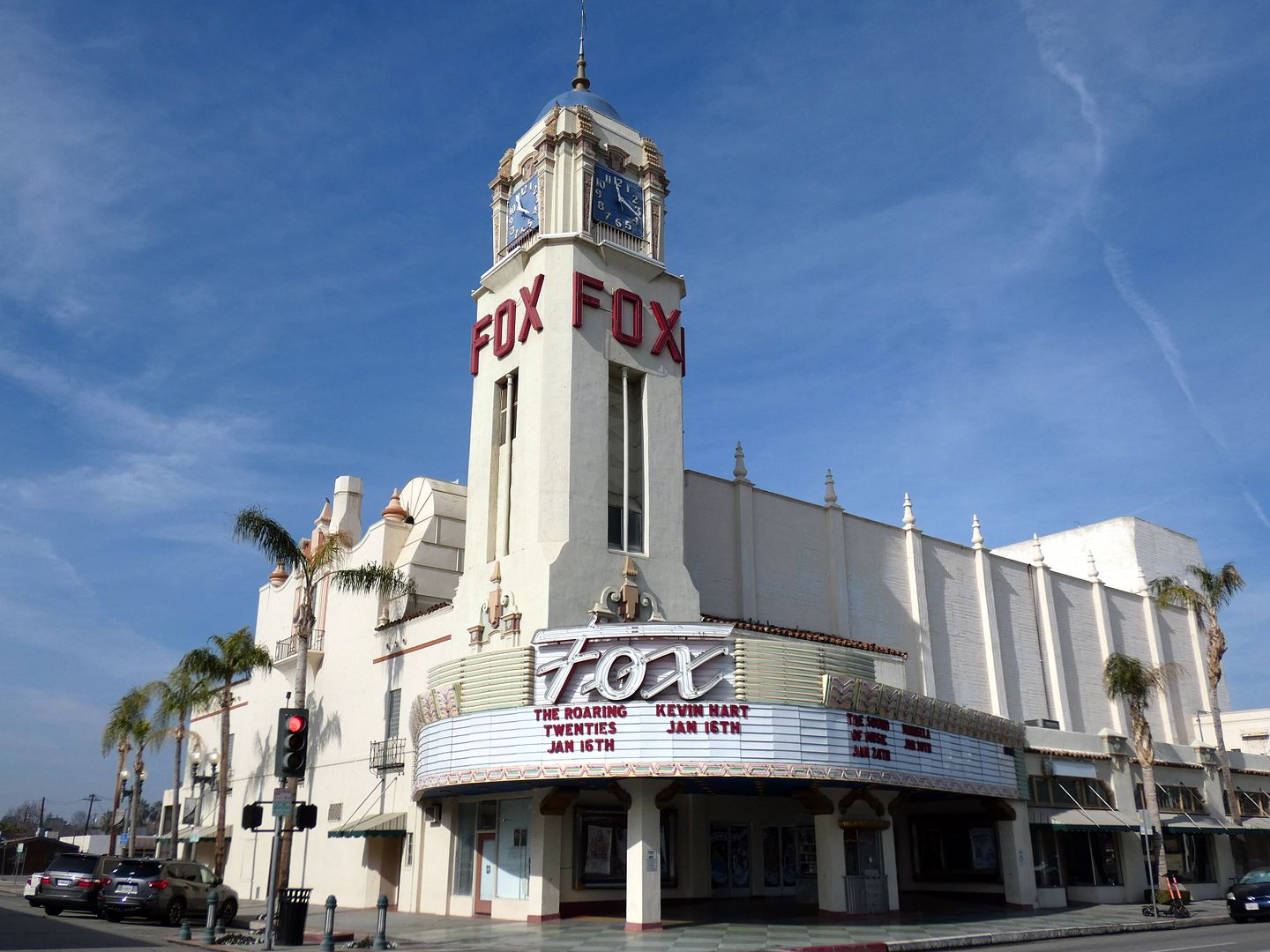
The theatre opened on Christmas Day 1930—nearly 60 years after the city was incorporated, and just over 40 years after the discovery of oil in the area and the arrival of the train.
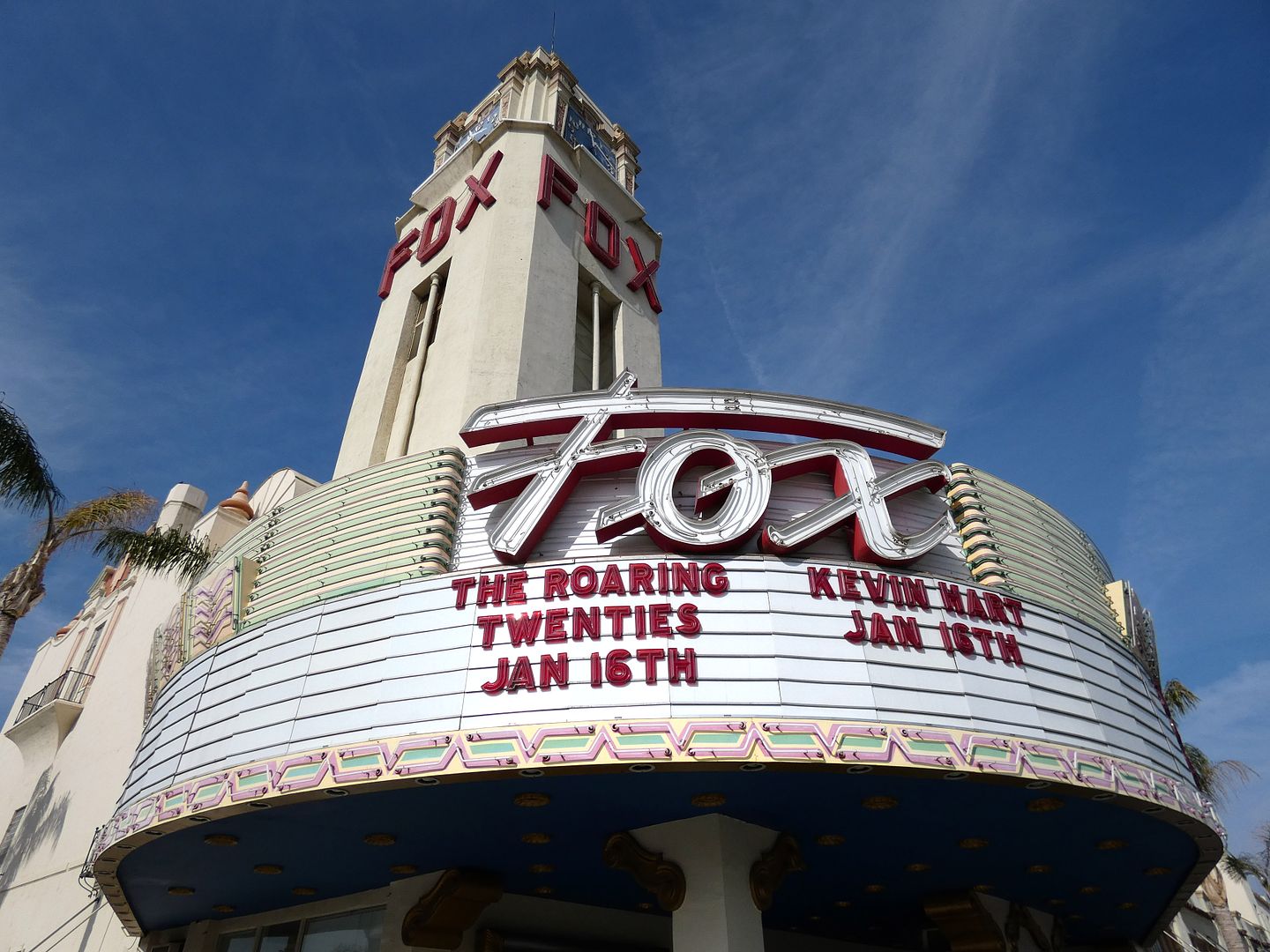
It was just a year into the Great Depression and two years before the repeal of Prohibition. People really needed to go to the movies to escape.
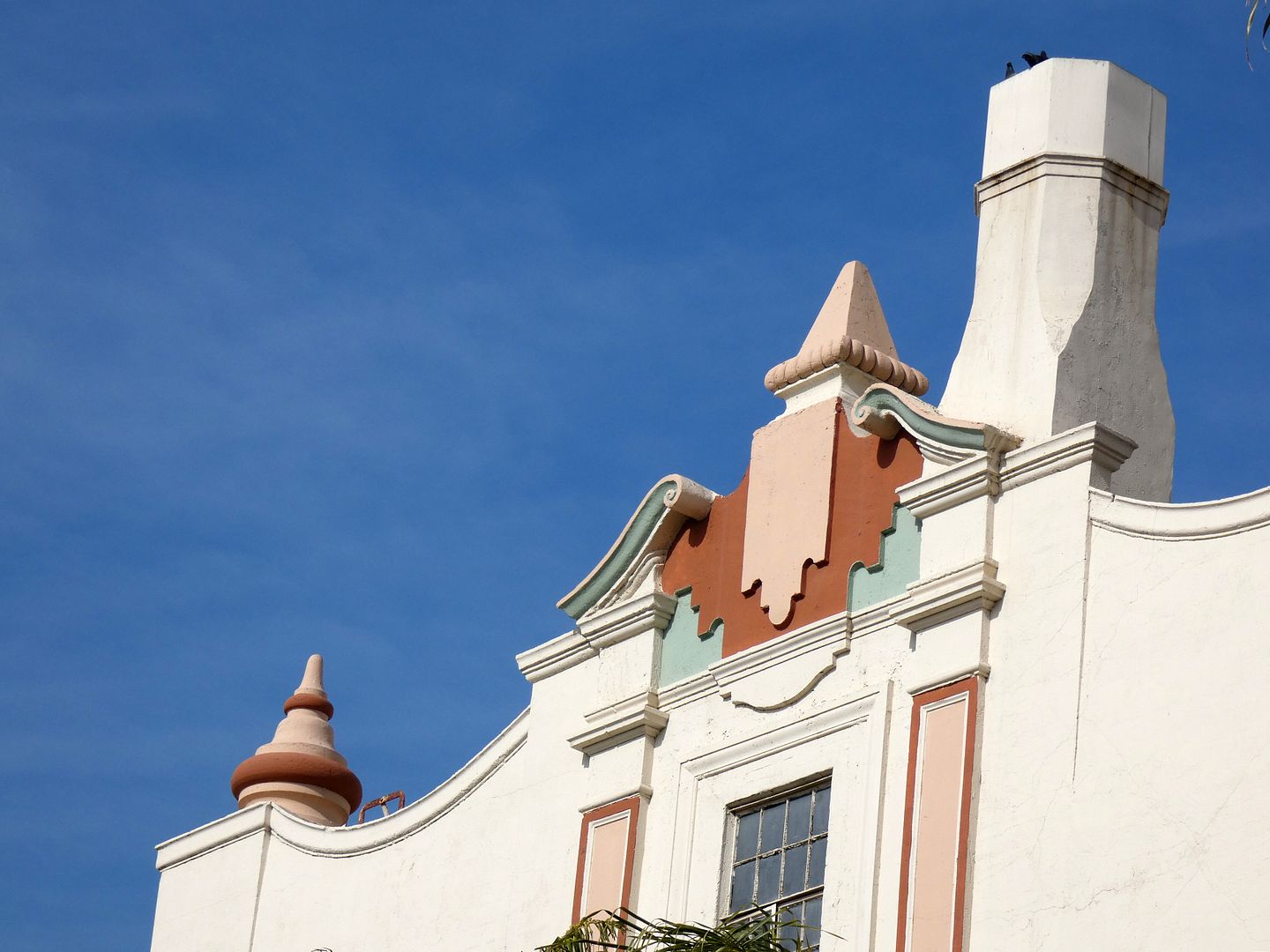
The Fox Bakersfield started out as a fantasy-type venue known as an "atmospheric" theatre—one designed by architect S. Charles Lee to transport its audiences to far-away lands (and maybe even eras).
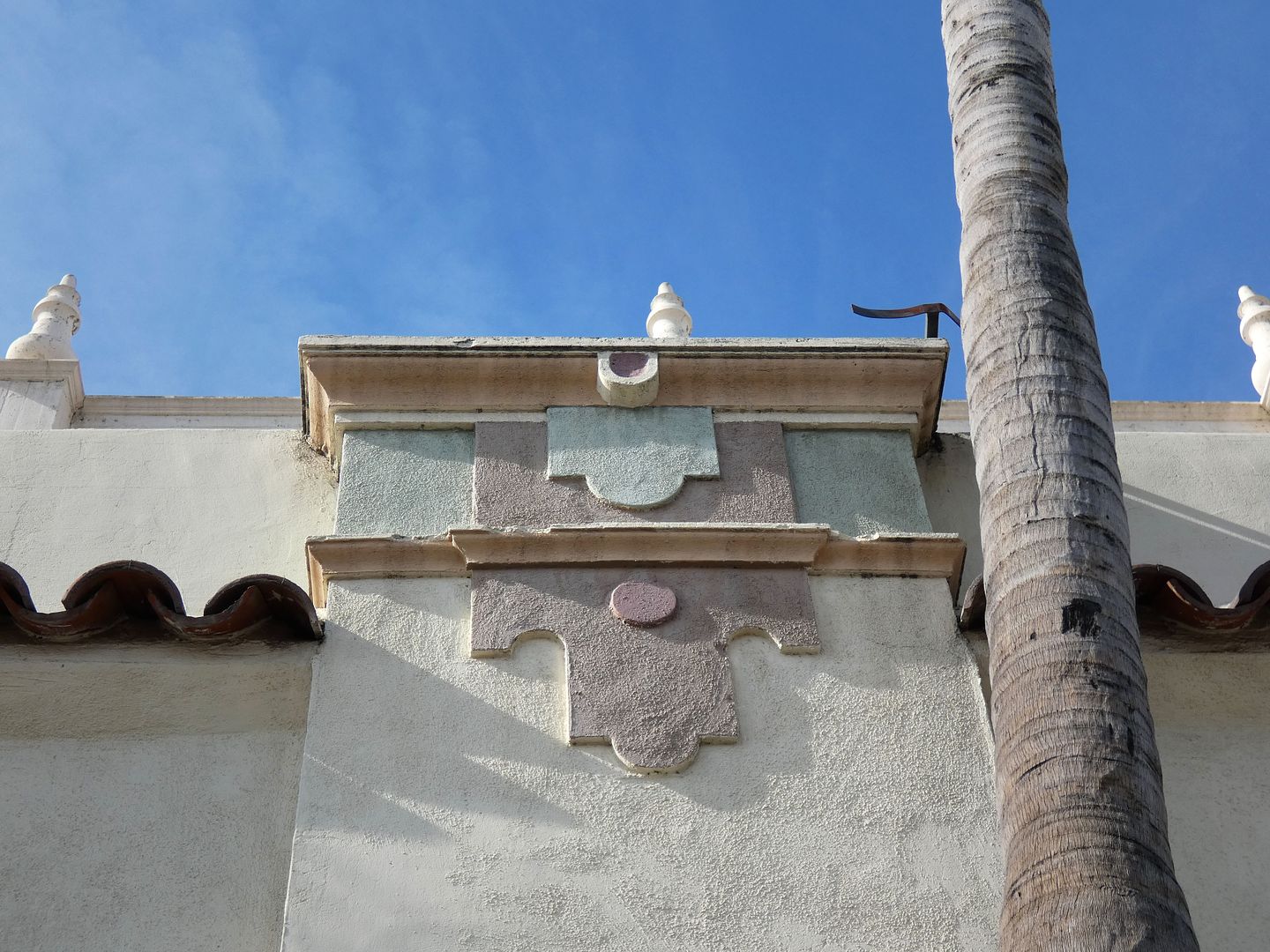
In the case of the Fox, it was Spain—or some other village in the Mediterranean, with Spanish Colonial Revival touches including red terracotta roof tiles (still visible today).
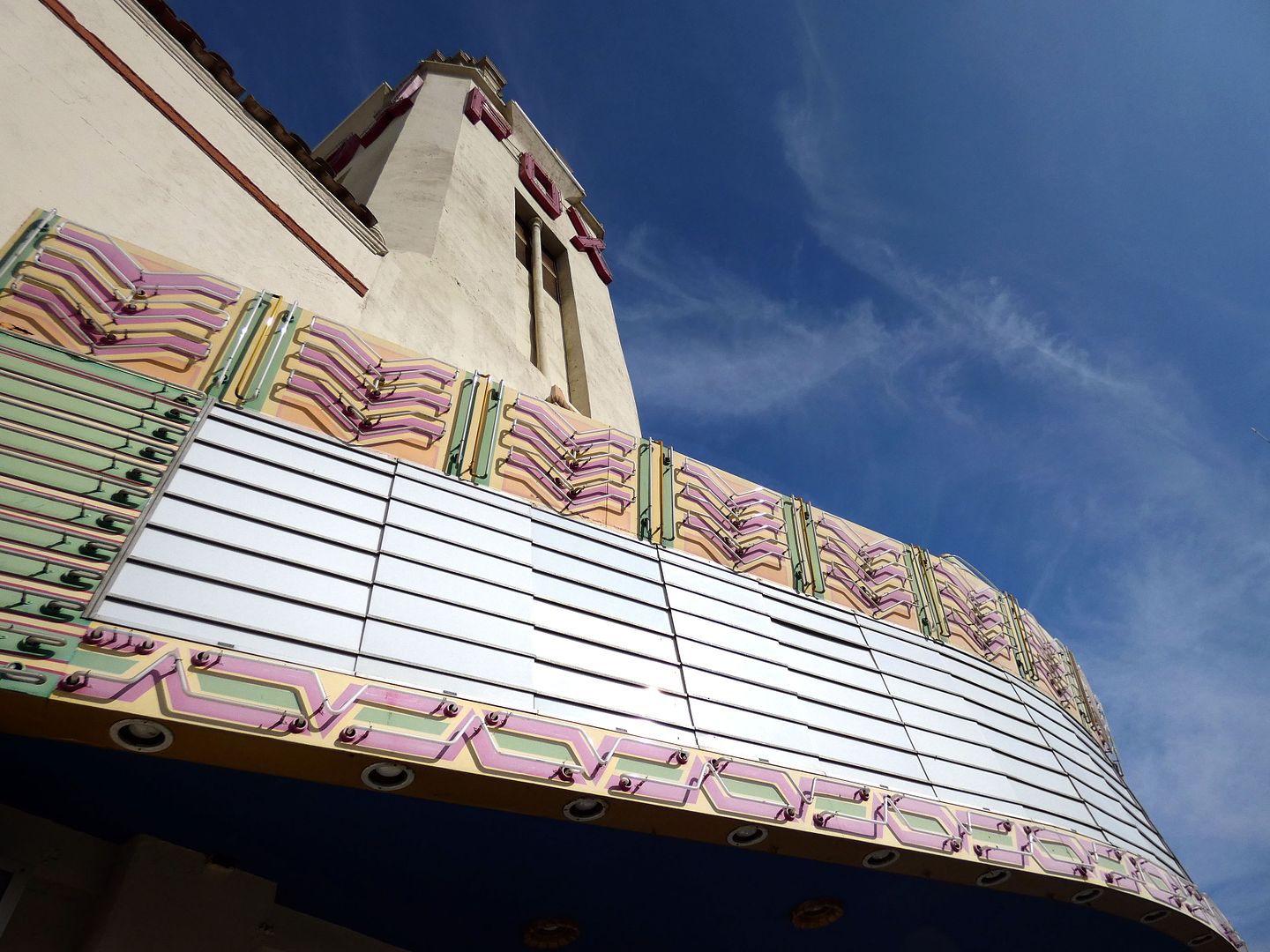
And the Fox arrived just in time, too—in time to greet one of the largest migrations to California (and especially Bakersfield) in history, the Dust Bowl.

The 1930s saw a huge influx of "Okies" who fled the drought-ravaged Southwestern Plains states (like Oklahoma)—some initially as migrant workers, but many as permanent transplants.
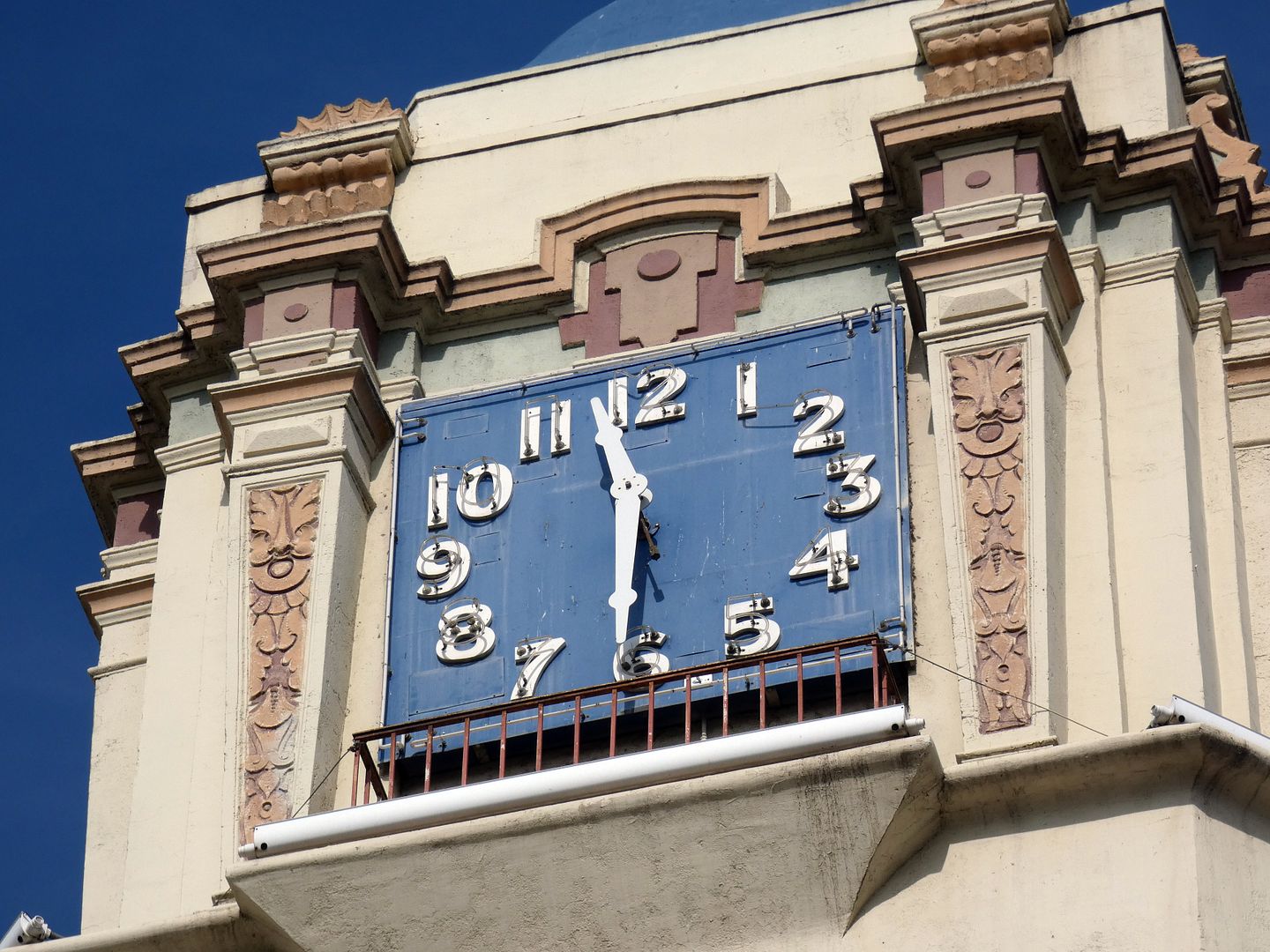
For a time, Bakersfield was bona fide The Grapes of Wrath territory—one that still deserved a movie palace (one that proudly screened the 1940 film version, and the only one that provided A/C a.k.a. "mechanical refrigeration" in the entire hot, dusty Central Valley).

Today, the look and feel of it reflects a major renovation that occurred in the 1953, when Fox West Coast President Charles P. Skouras directed the chain's theatres to be redone in a style more modern and glamorous to the time (including replacing the milk-glass marquee with a curved one covered in animated neon, just in time to advertise Gentlemen Prefer Blondes).
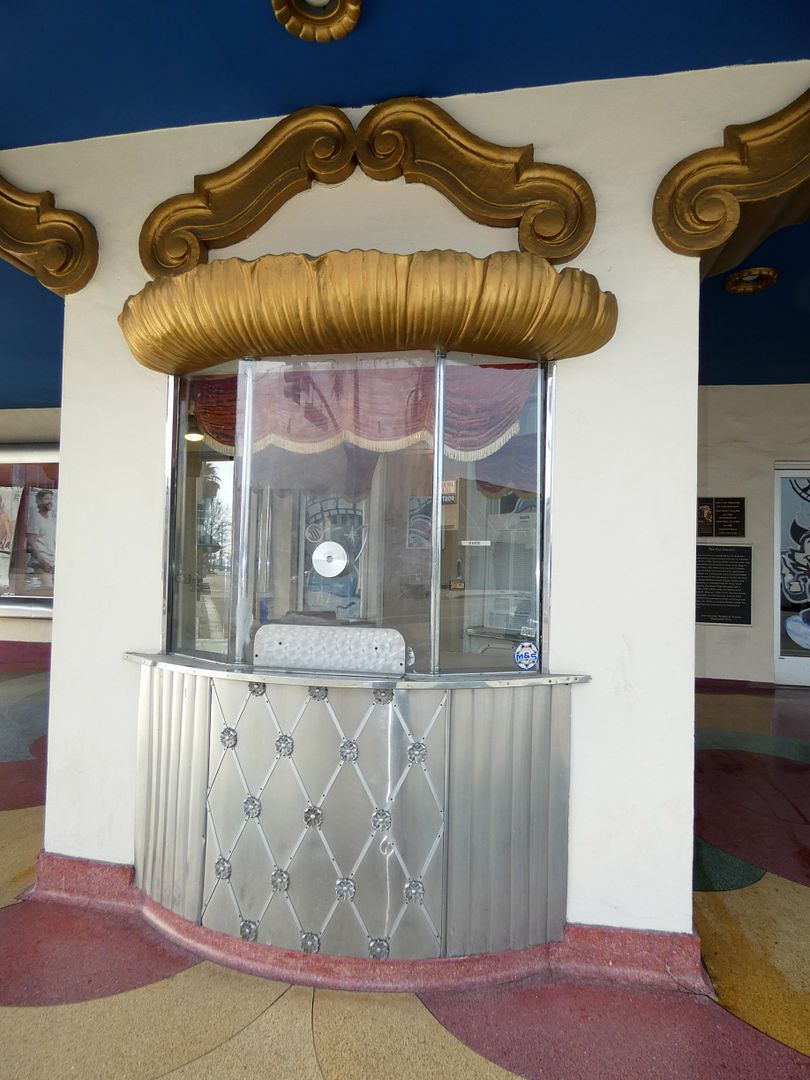
That's when designer Carl G. Moeller covered the Mediterranean-style tiles on the façade along the sidewalk with stucco and enclosed the forecourt box office's tiled lower half...
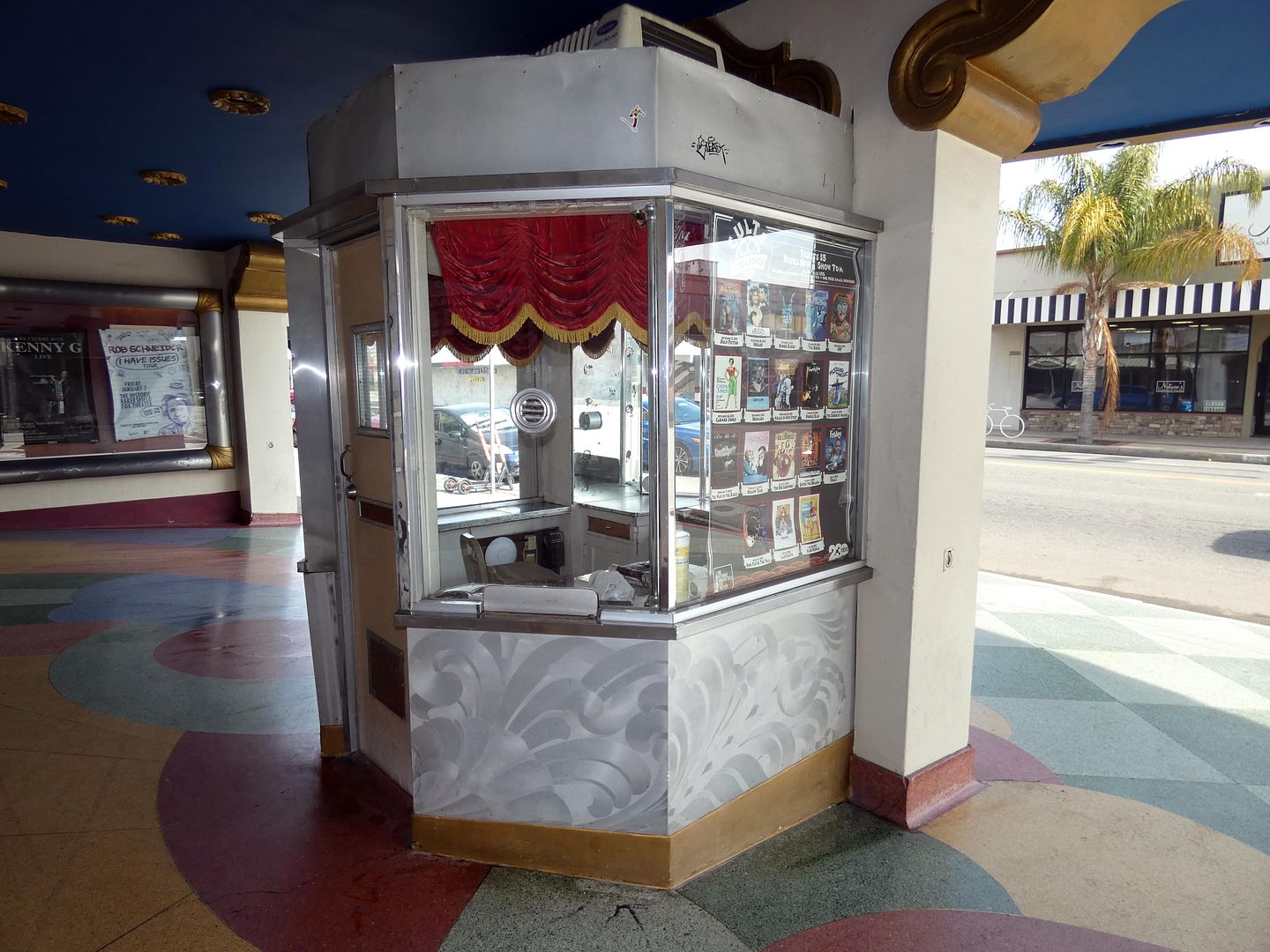
...and etched it with those swirly bits, which have become a telltale sign of a theatre having been "Skouras-ized."
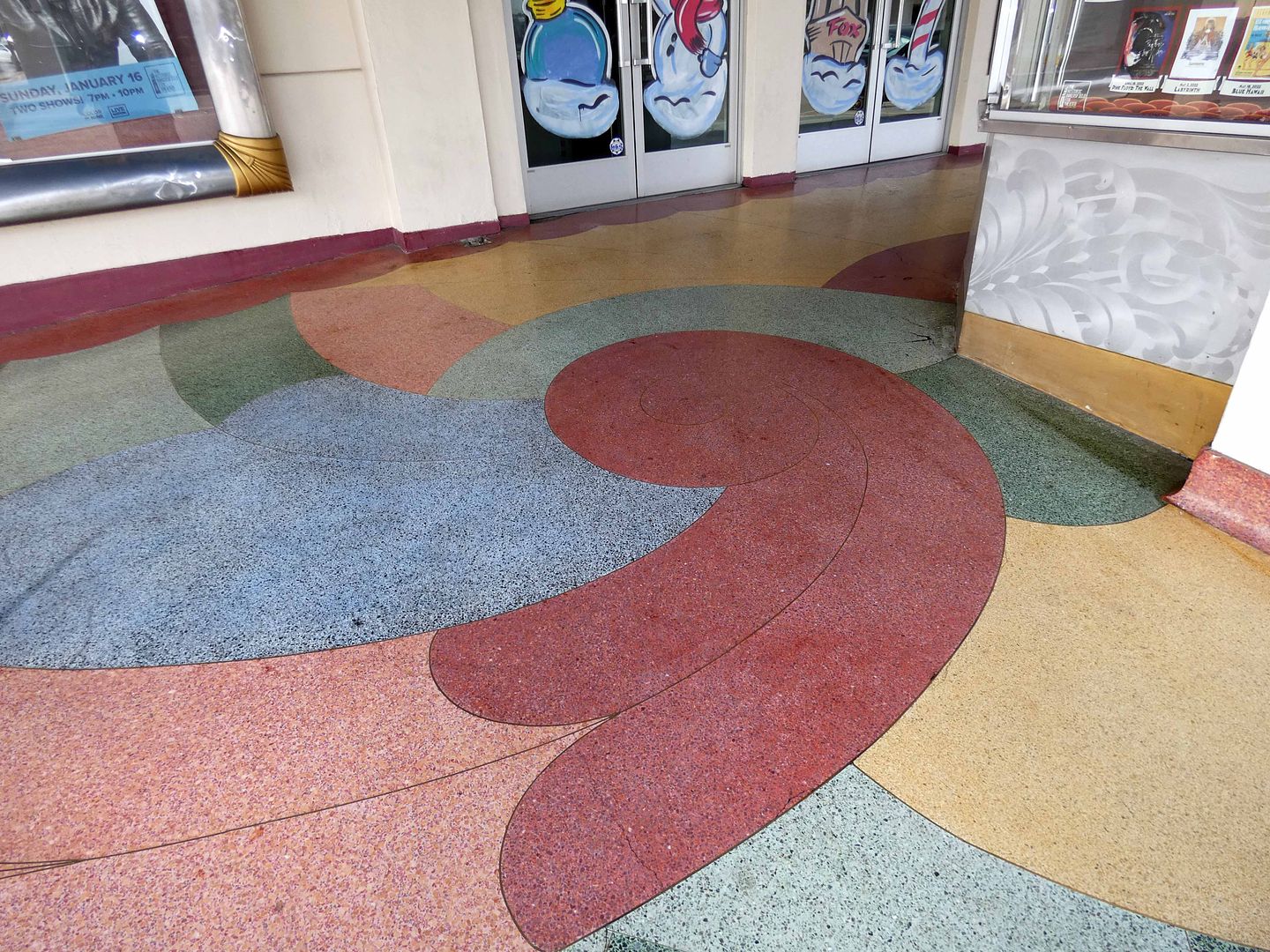
The colorful terrazzo sidewalk that surrounds it matches the motif as well.
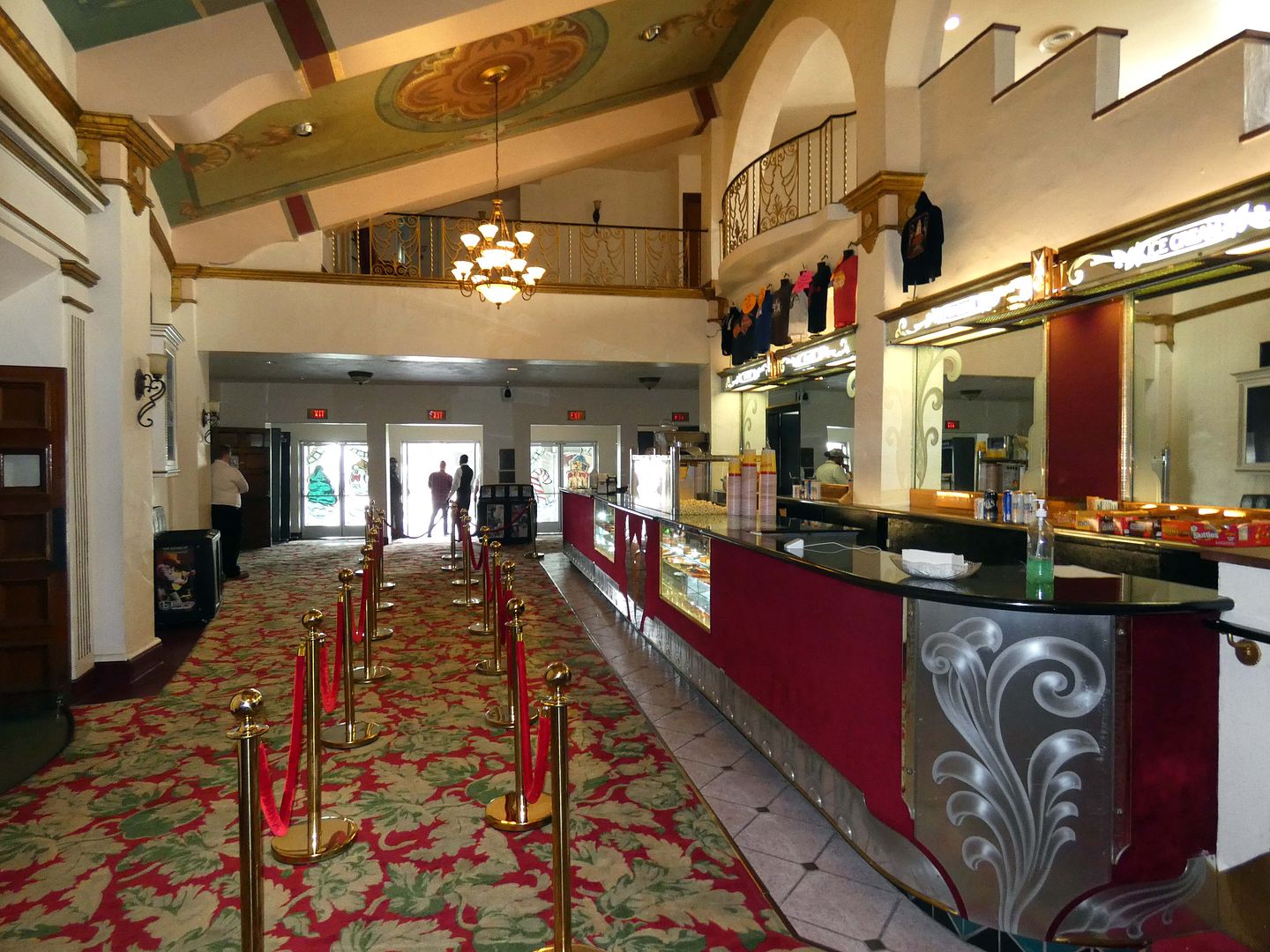
The concession stand was also renovated then...
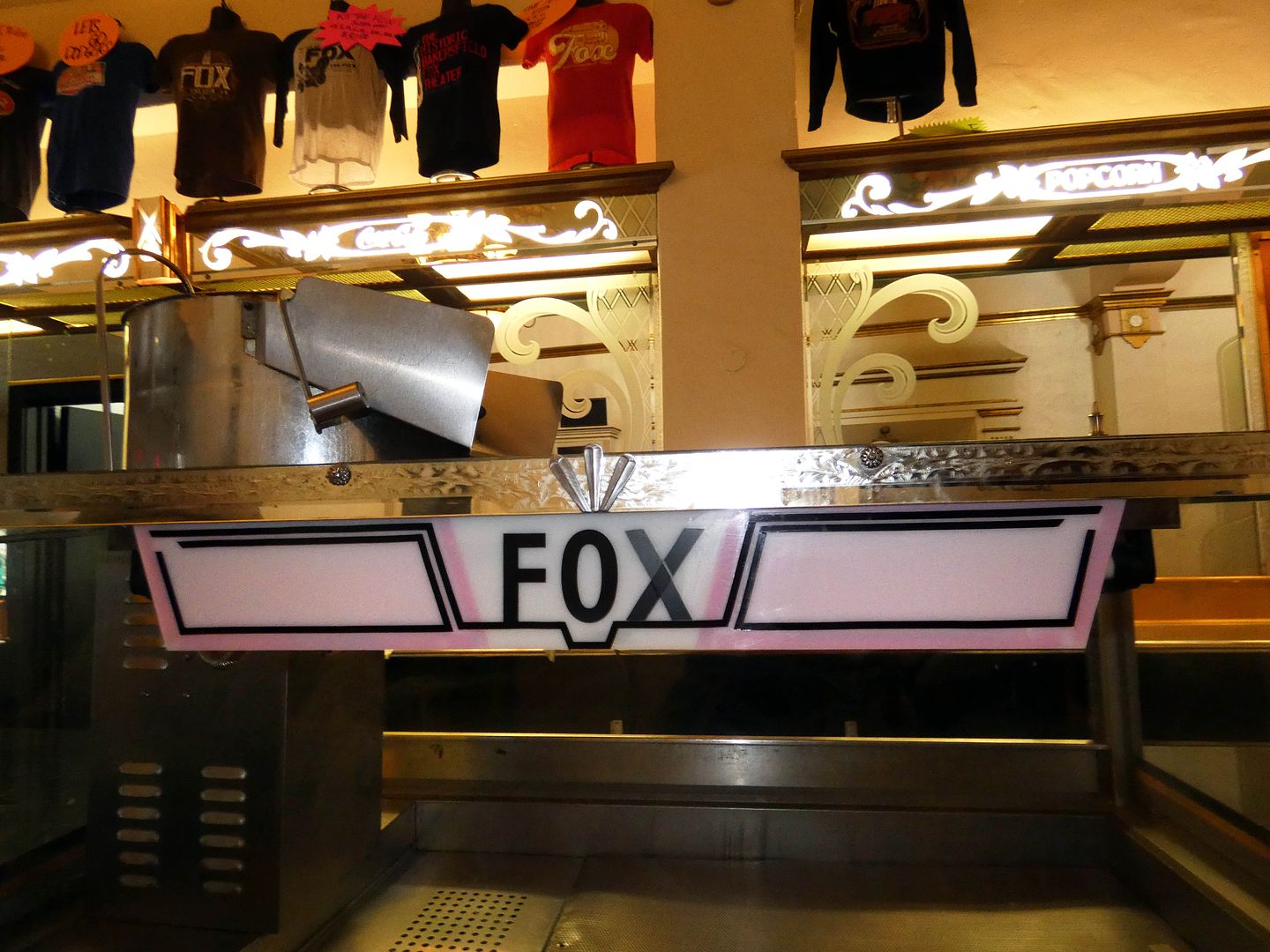
...and it still bears the marks of the theatre chain's original owners...
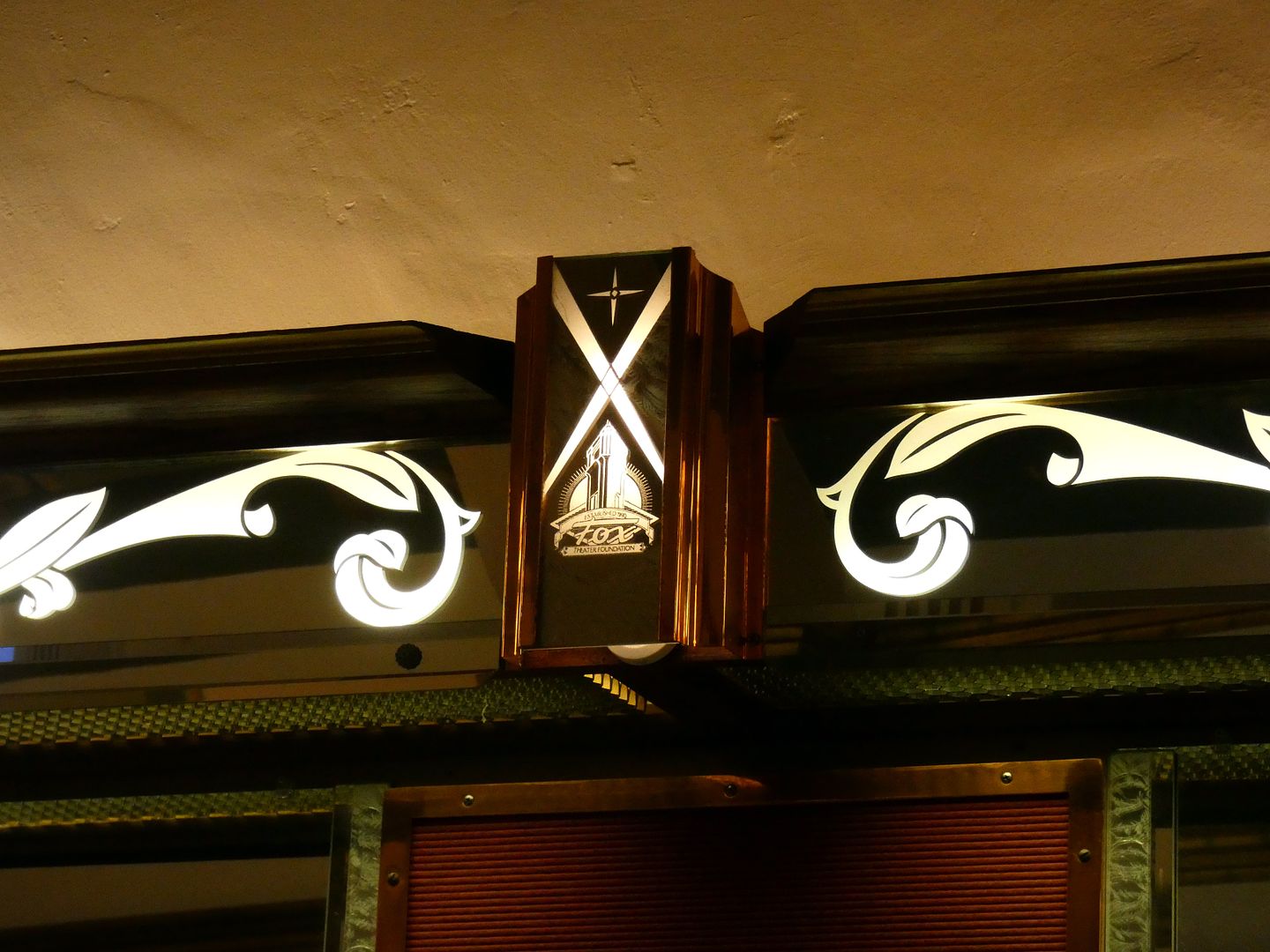
...though perhaps that's from the 1990s, when the Fox Theatre Foundation was established to purchase the theatre and revitalize the space for its 1994 reopening and subsequent restoration (which included a reproduction of the 1950s-era snack bar).
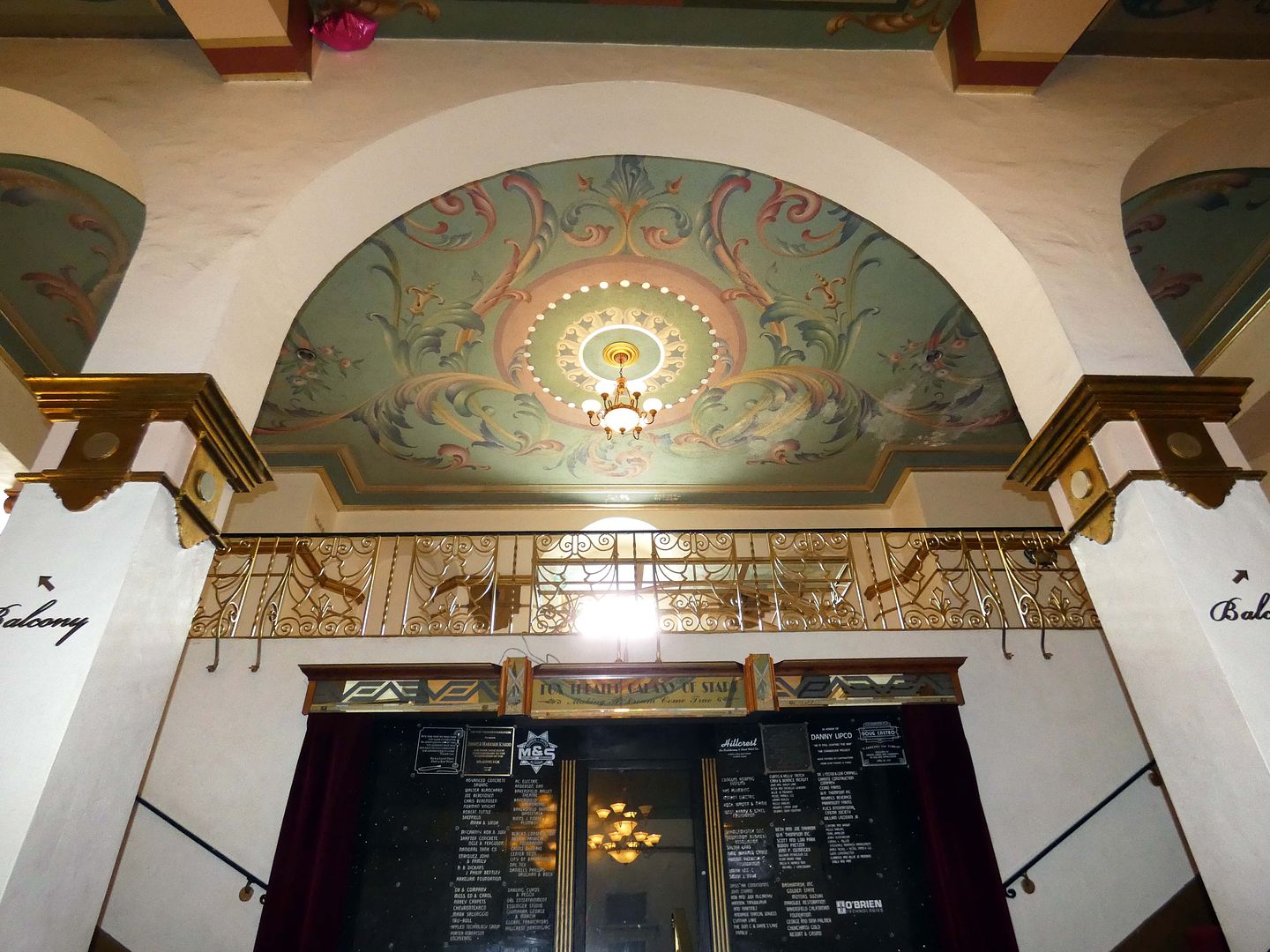
Visiting the theatre today is interesting if you know about its two different design schemes—now both historic, as it's one of the only remaining intact examples of the more or less complete Skouras design in a Fox theatre (now nearly 70 years old).
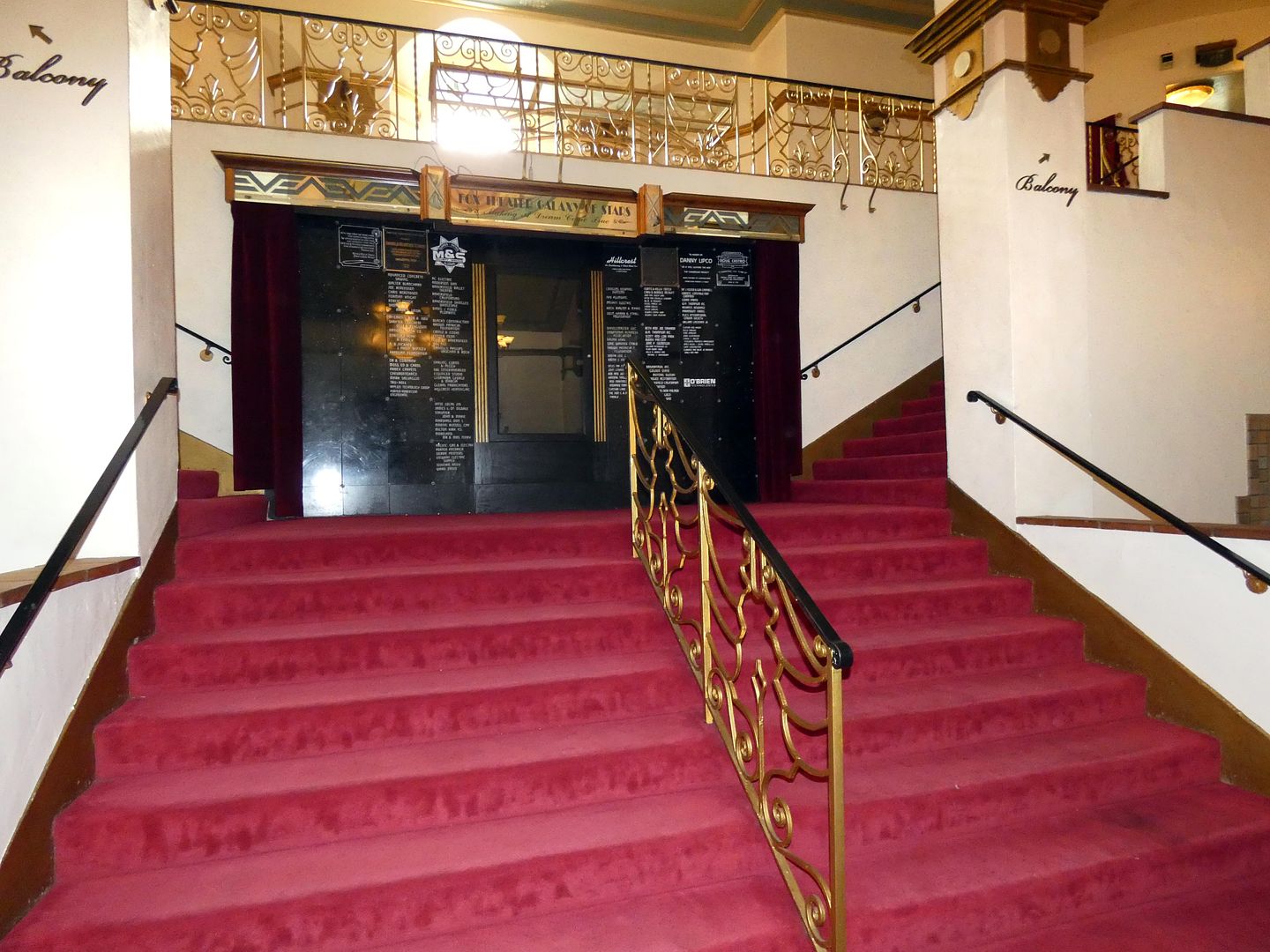
You see it for what it is now—but at least I couldn't help imagine how it was before.
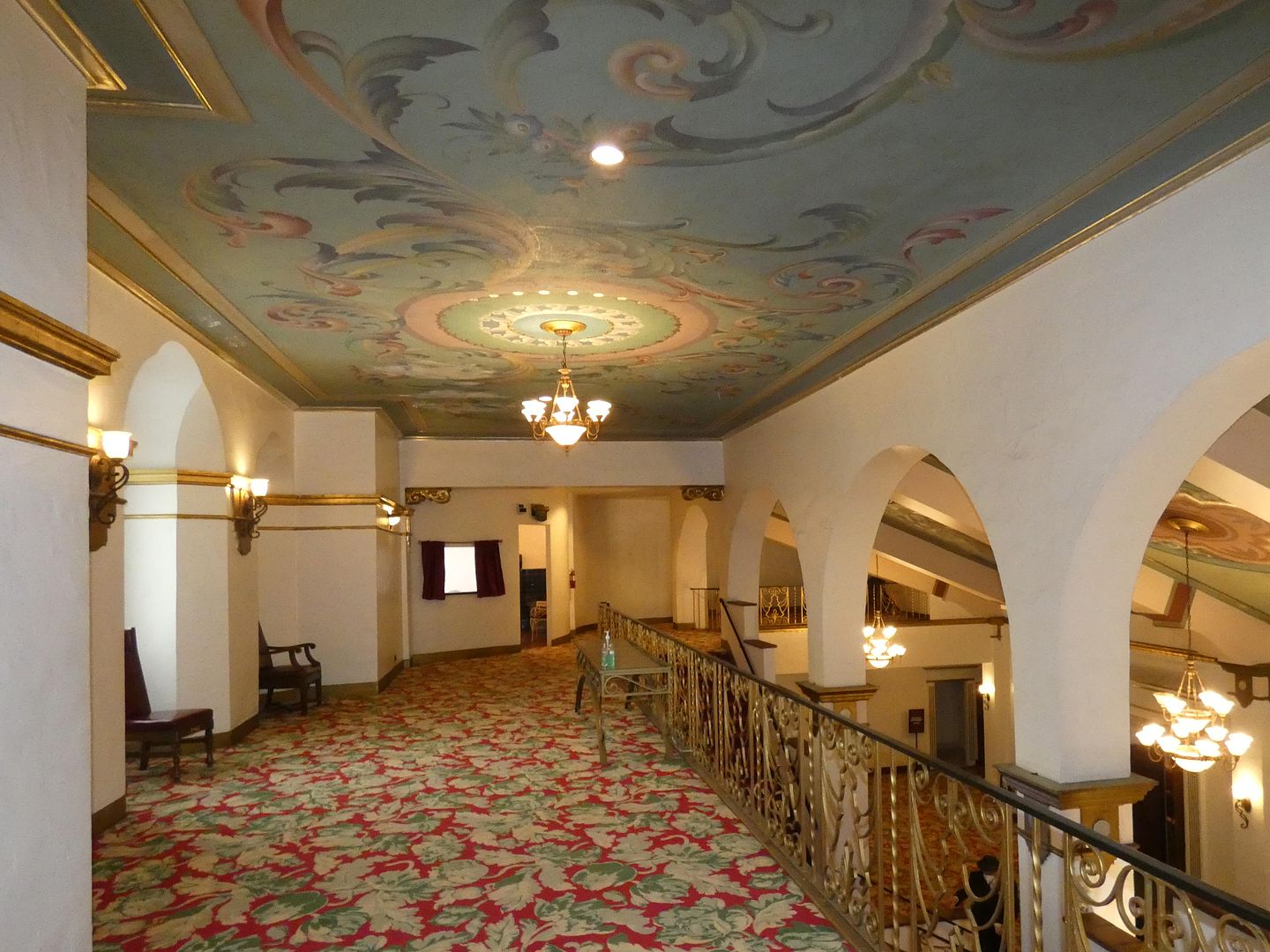
Today, a balcony level promenade overlooks the main foyer below...
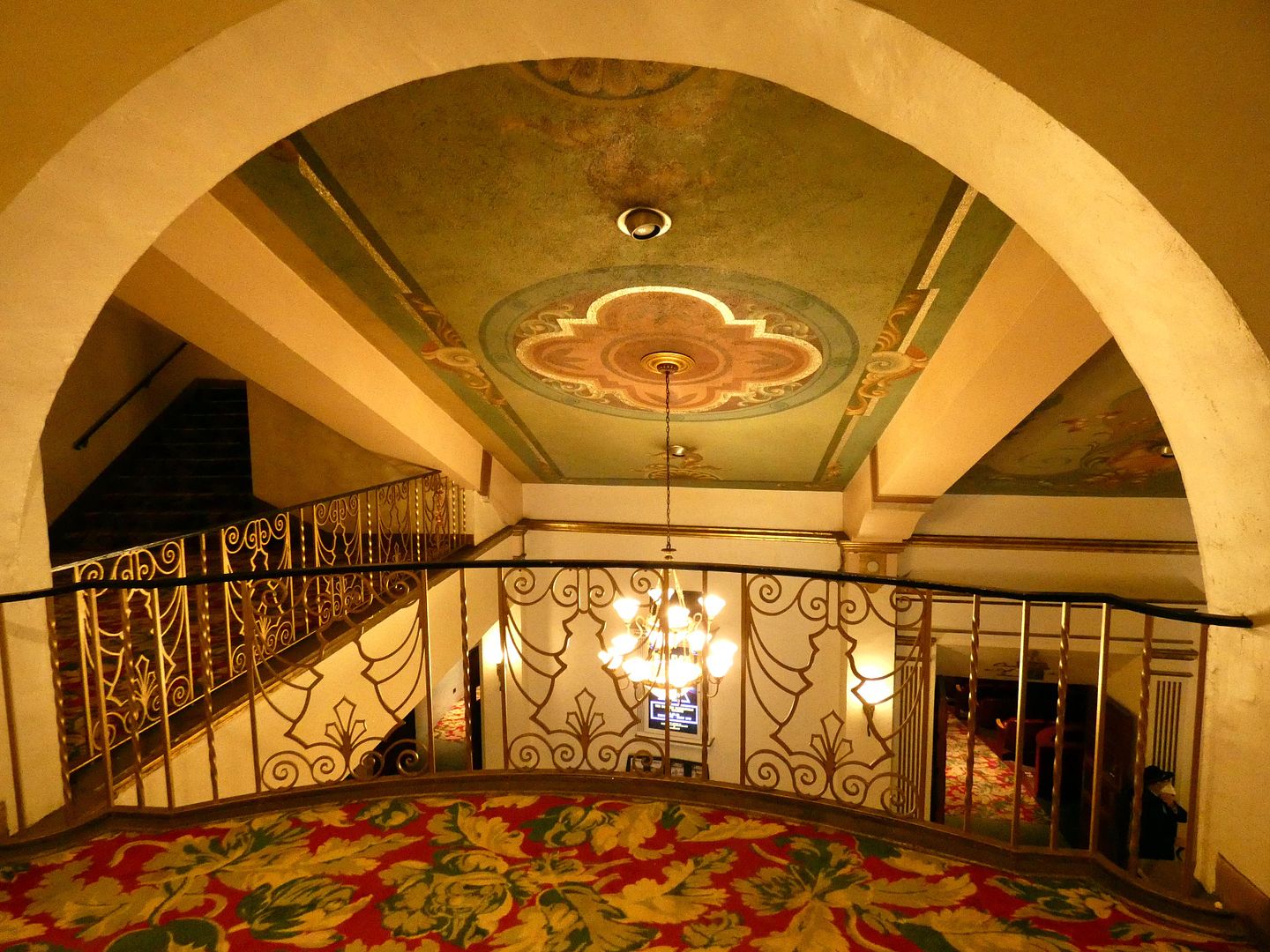
...with inlaid concrete beams supporting the balcony (but whose original stenciling has been painted over).
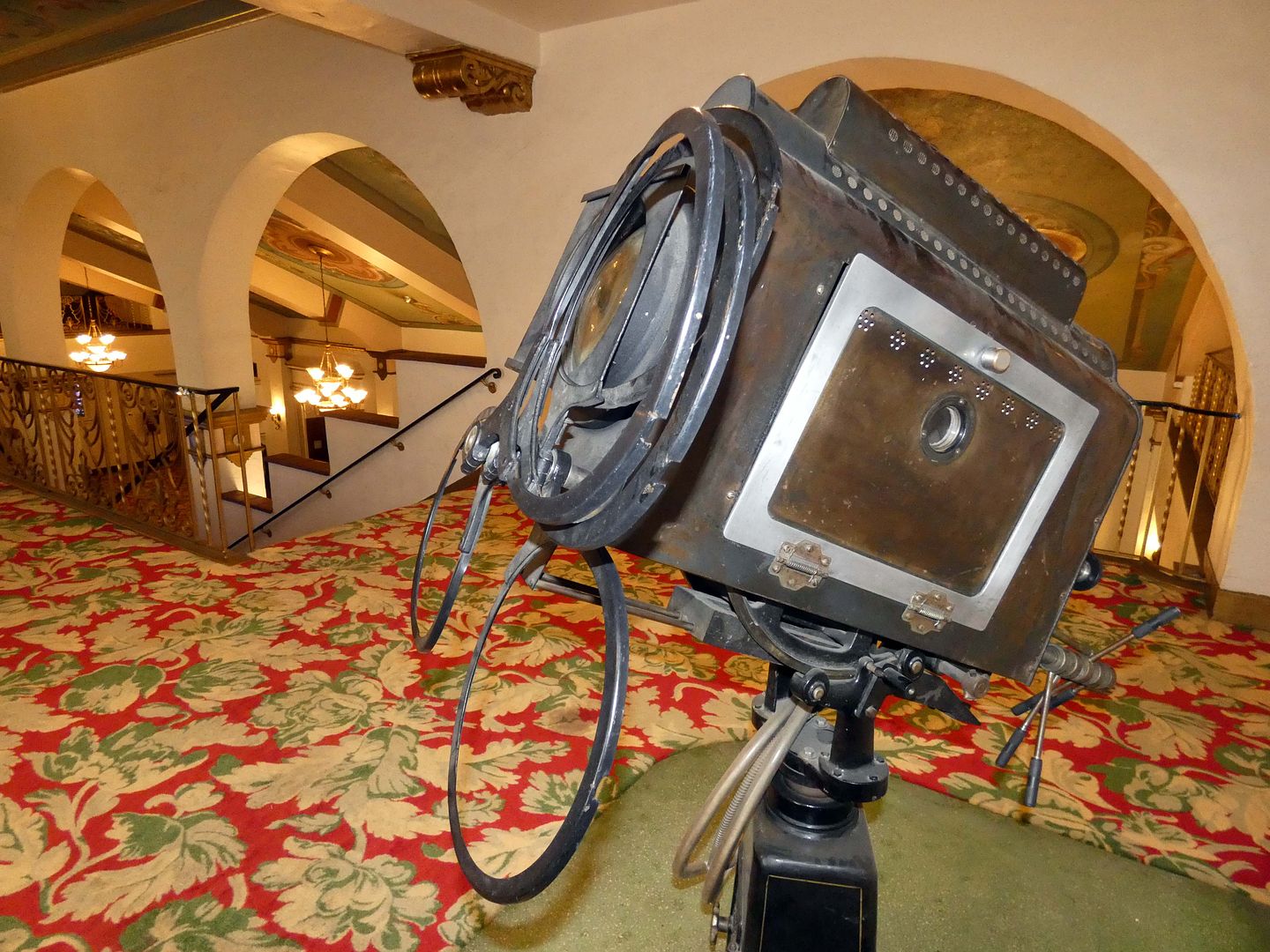
Up there, there's an original spotlight (circa 1930) on display...
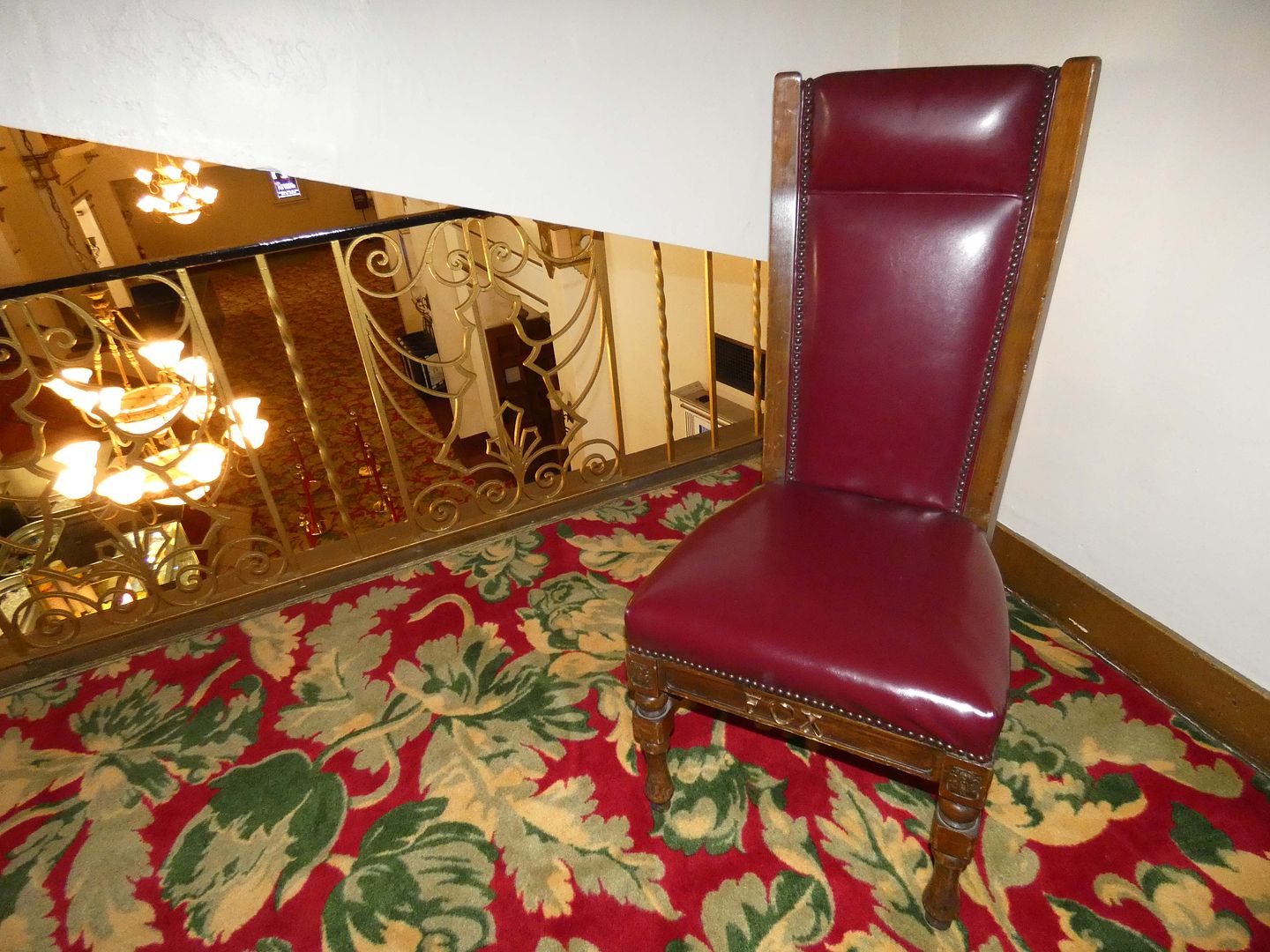
...as well as a couple of high-backed, wooden chairs emblazoned with the FOX logo across the front of the seat.
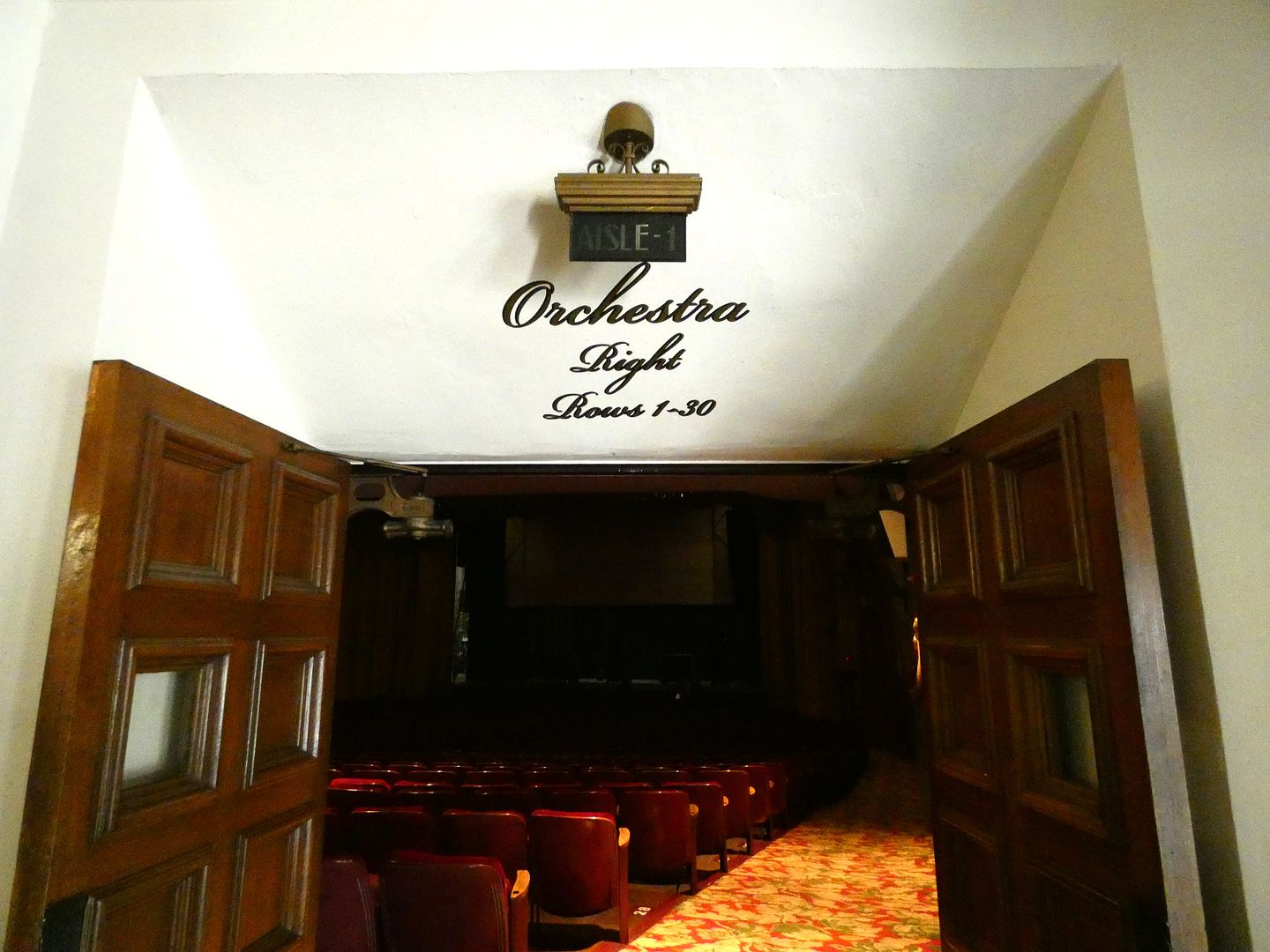
Downstairs, in the orchestra section, you can see how the 1,500-seat single-screen theatre is mostly intact—despite having almost been multiplexed in 1977. Instead, its then-owner, Mann Theatres, closed it and never reopened it, leaving it dormant and subject to subsequent dereliction.
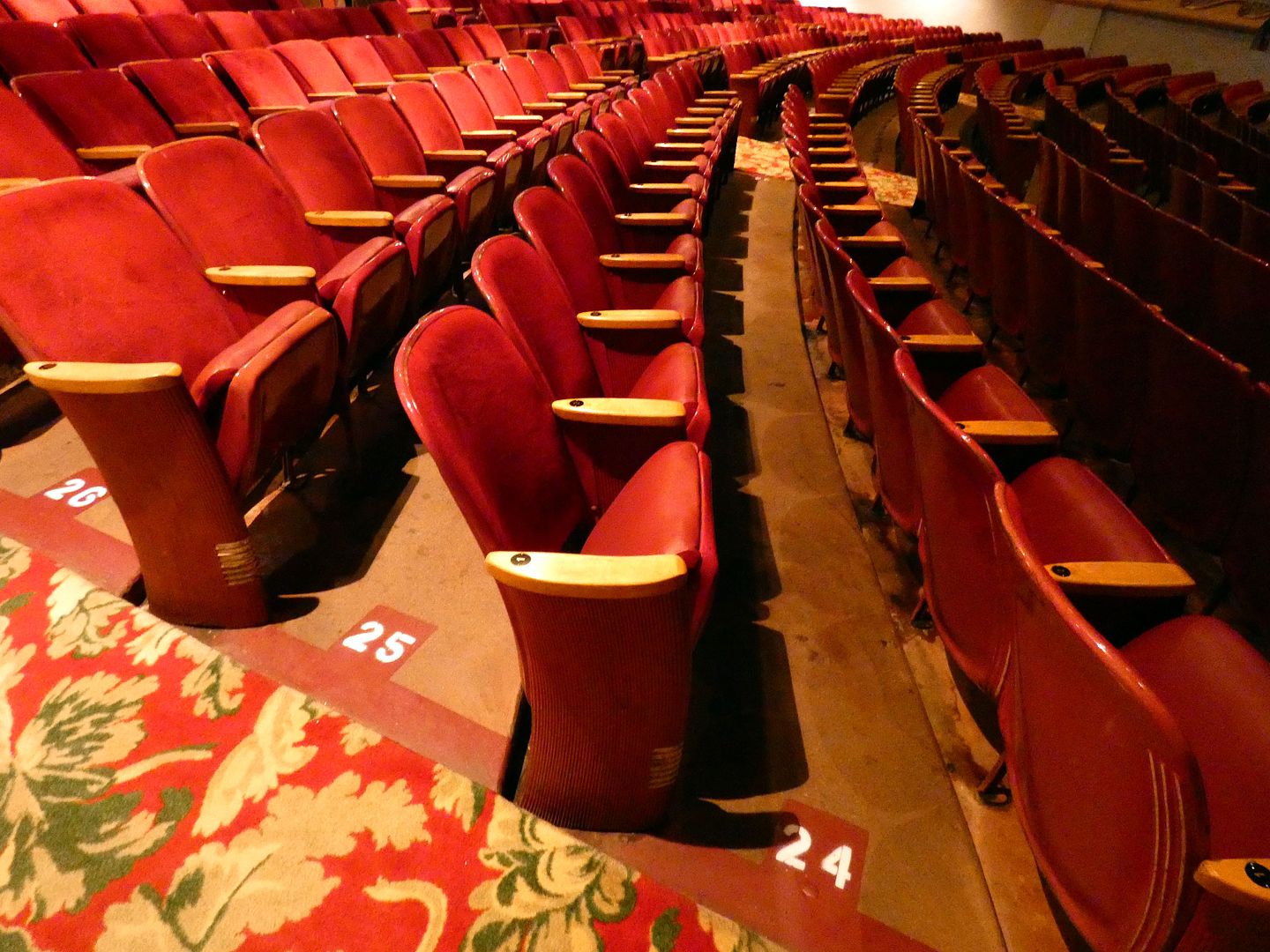
Reportedly when it opened in 1930, it was eight times the size of most California movie theatres of the time. And it still feels pretty huge—especially for Bakersfield.
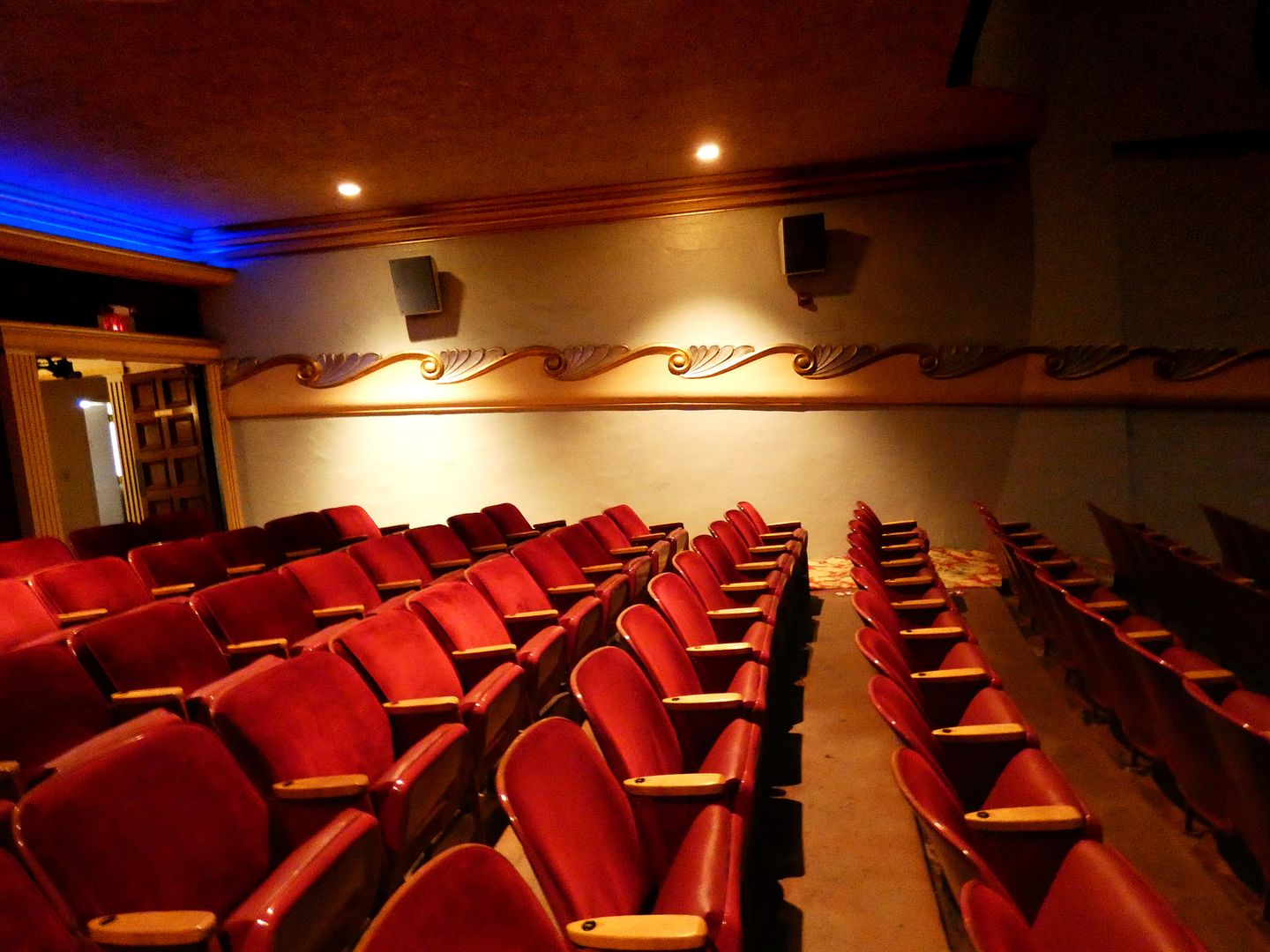
The 1953 Skouras renovation painted over the Mediterranean Village-themed murals on the auditorium walls (and hacked off the three-dimensional plaster "buildings")...
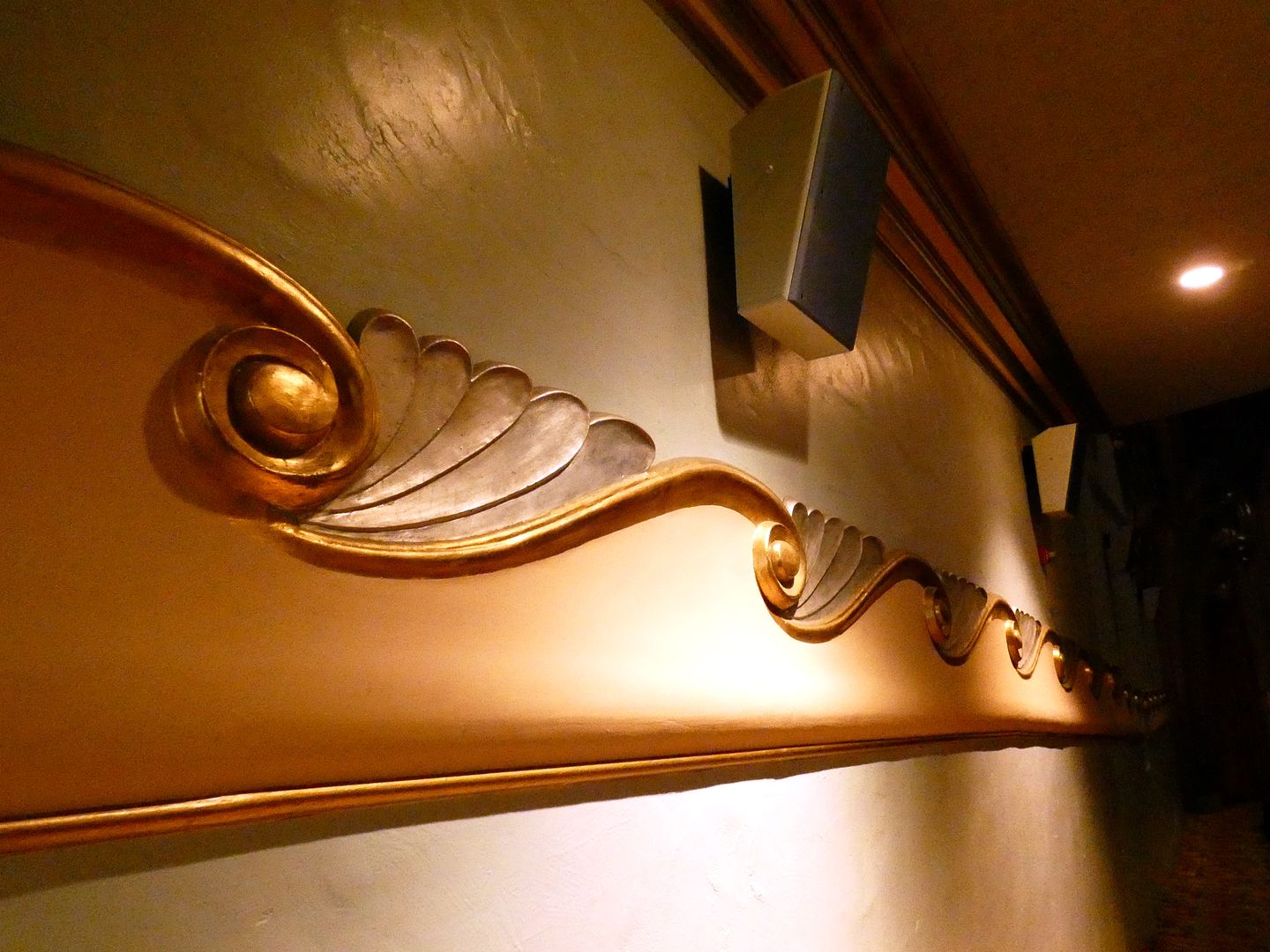
...and slapped cast plaster swirls on top...

...giving it what some say is an Art Moderne look.

Thanks to a tour led by Mike Hume of Historic Theatre Photography, I got to look behind the drapery and gold leaf plumes...

...and spot a remnant of a trio of pillars mounted on large pedestal bases that was once visible to the side of the proscenium (as well as the covered organ grilles, with no theatre organ in sight).
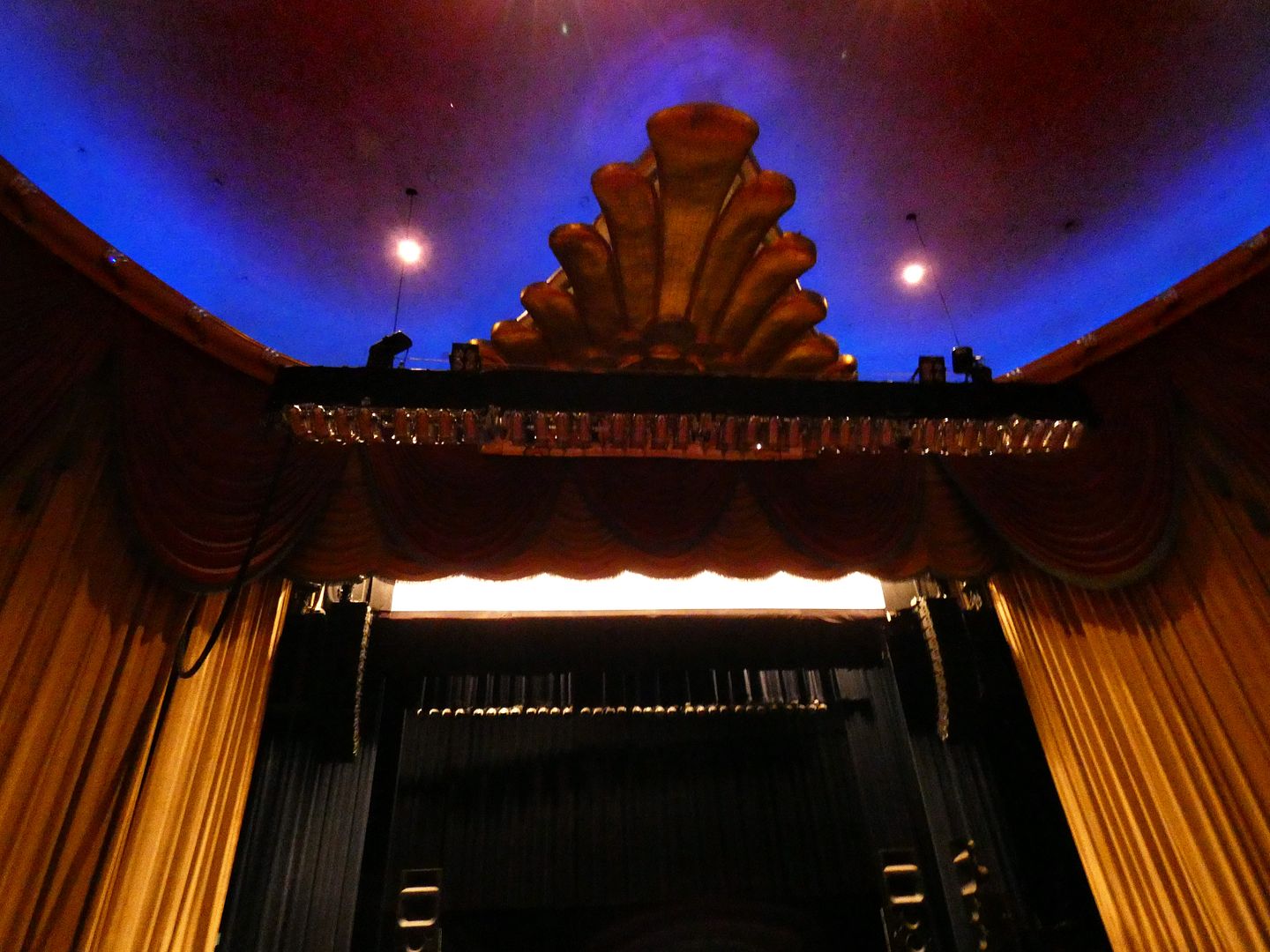
The auditorium ceiling still offers its twinkly "sky" effect—but there are no more lighting cues to mimic sunrise or sunset.
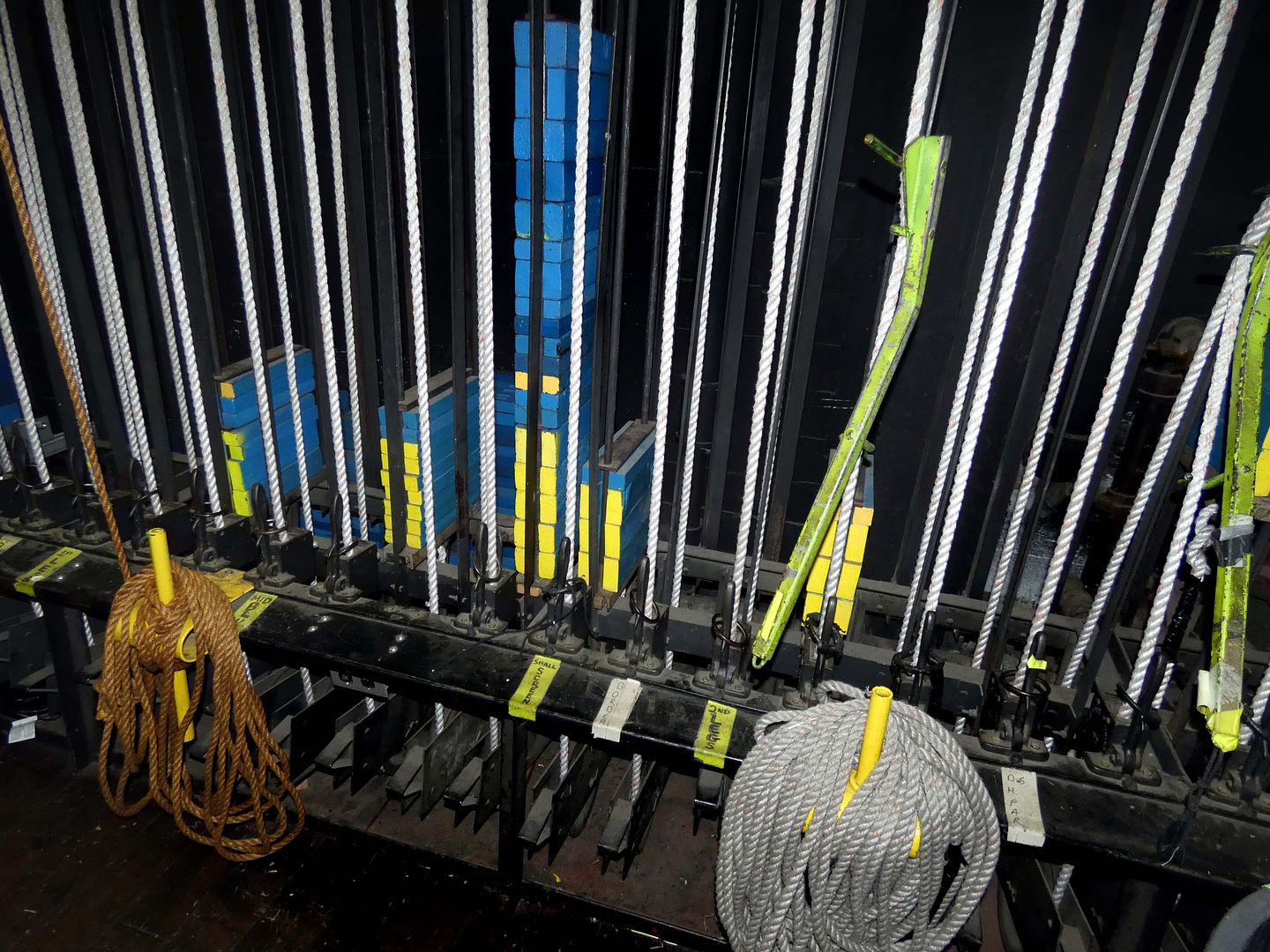
Although S. Charles Lee designed the Fox primarily as a cinema—equipped to screen the "talkies" of the day—it was also outfitted for vaudeville and other live presentations, including a fly system and a large stage and measures 48 feet wide by 27 feet deep.
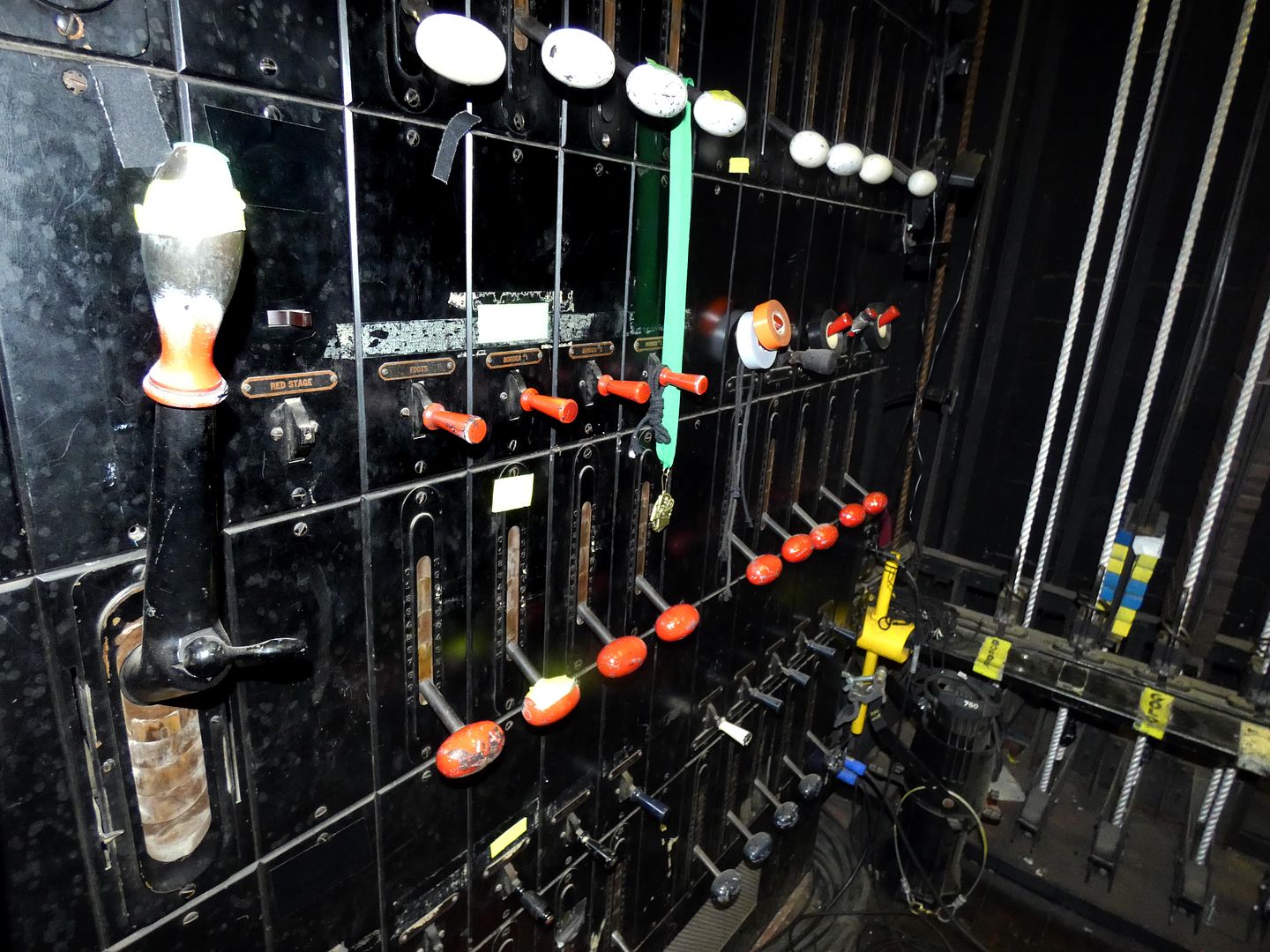
That stage has seen performances by opera singers, classical pianists, and the LA Phil, as well as today's top stand-up comedians (like Kevin Hart). And the original lighting board is still in use.
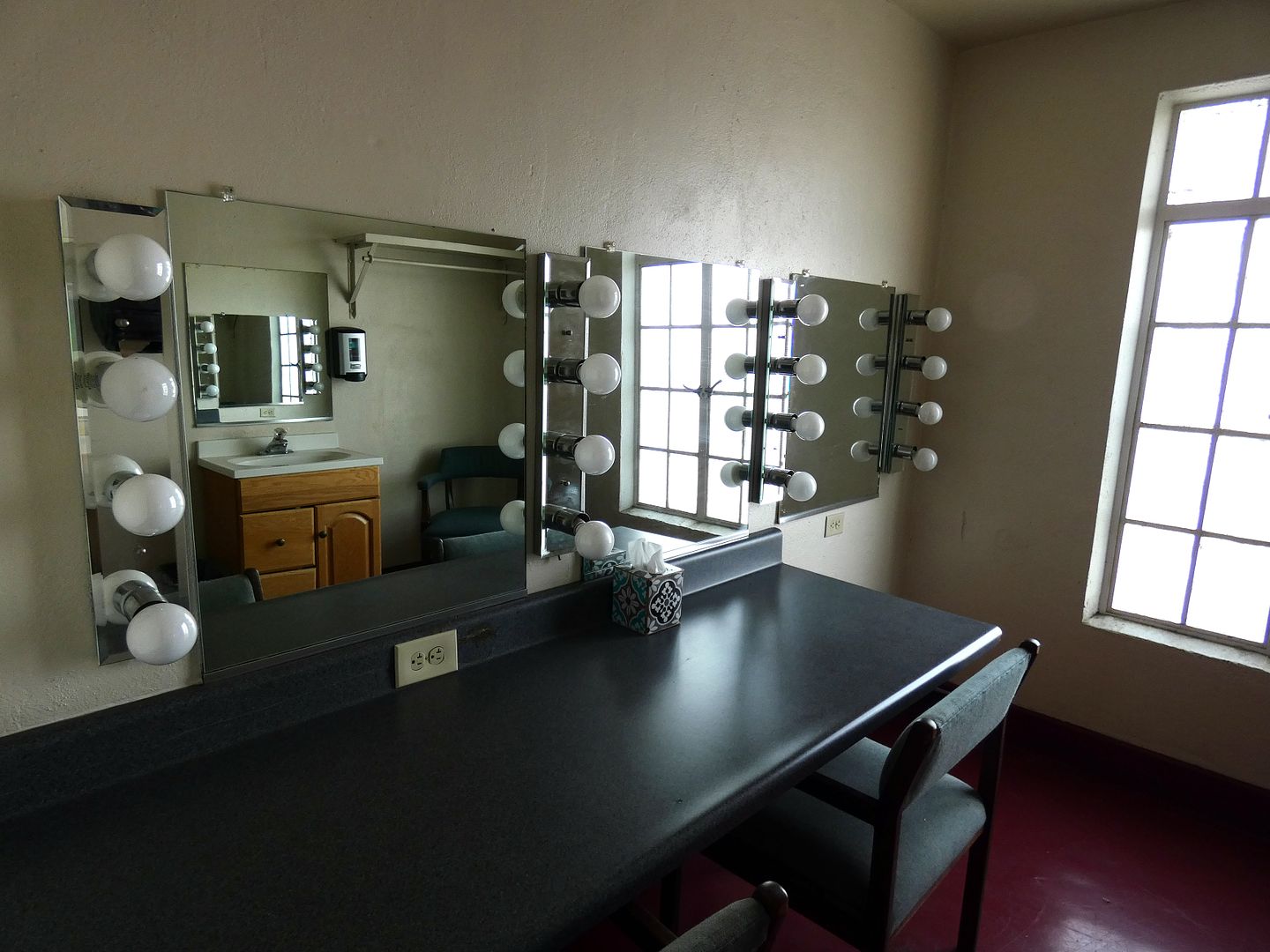
Other facilities suited for stage productions (rather than movies) include what one publication called "a commodious suite of stage dressing rooms," located upstairs stage left.
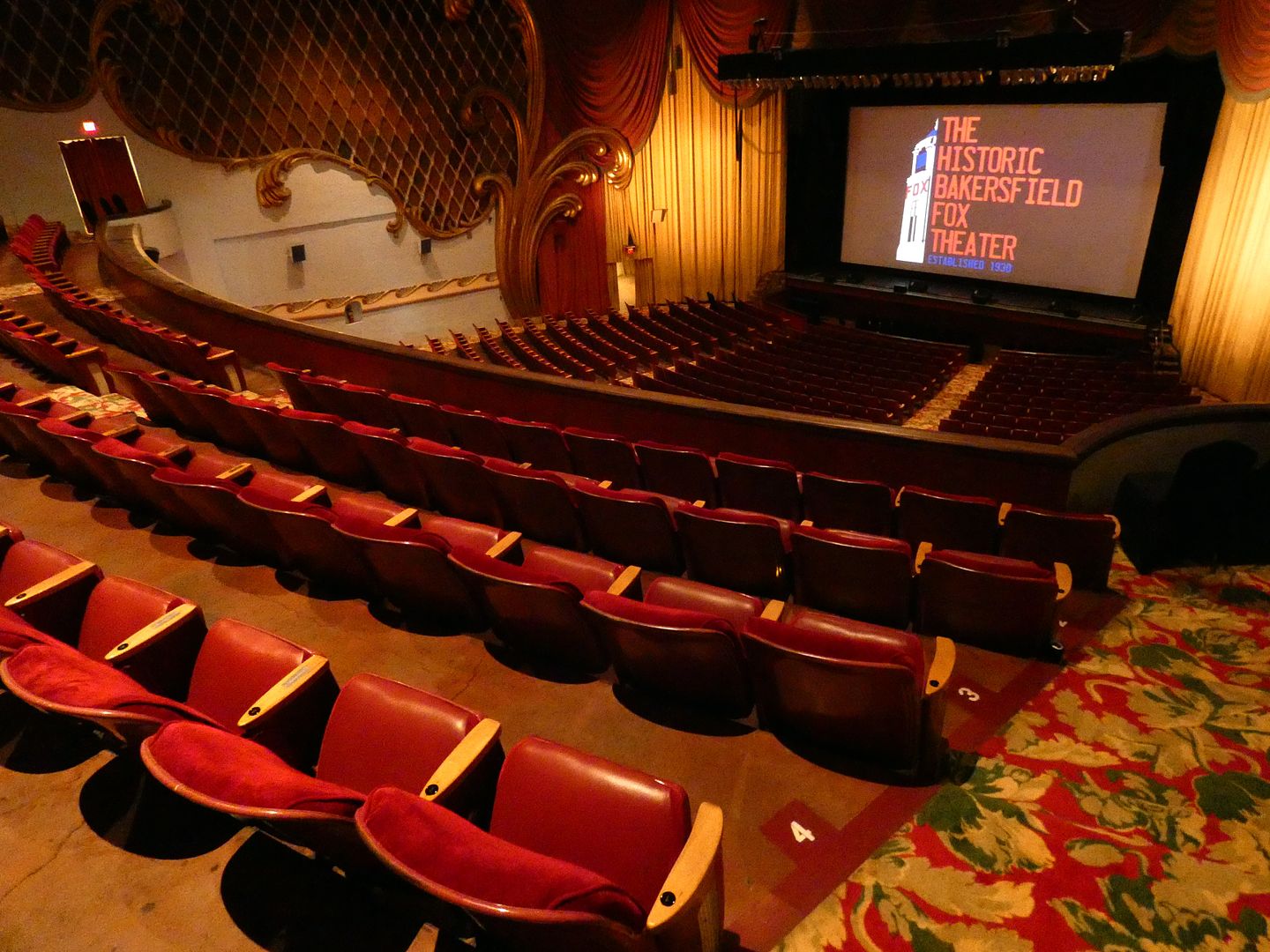
Our tour also took us up into the balcony, which gives a great view of the orchestra level below...
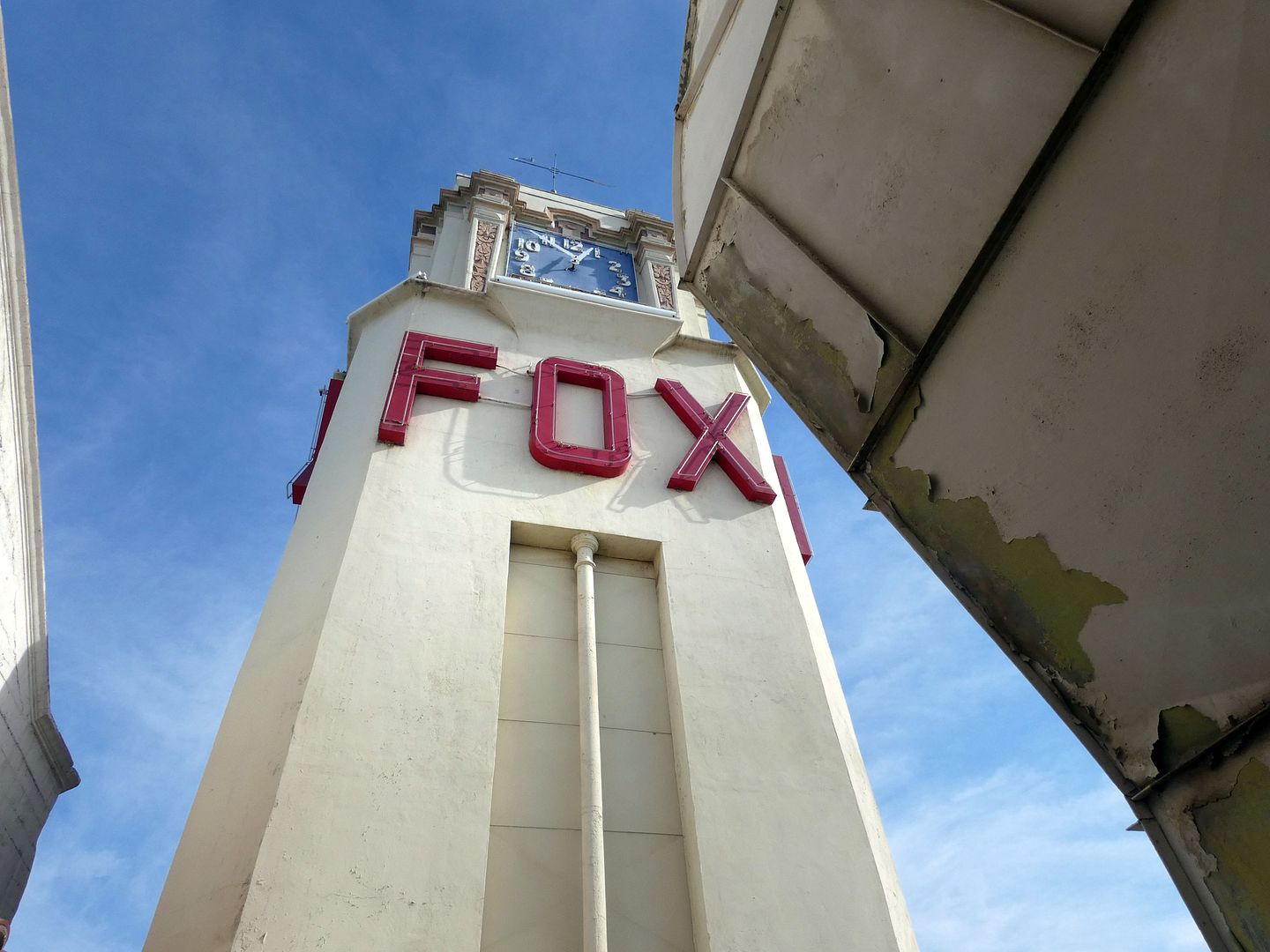
...past a window that look out onto the FOX-branded advertising tower...

...and into the projection booth...
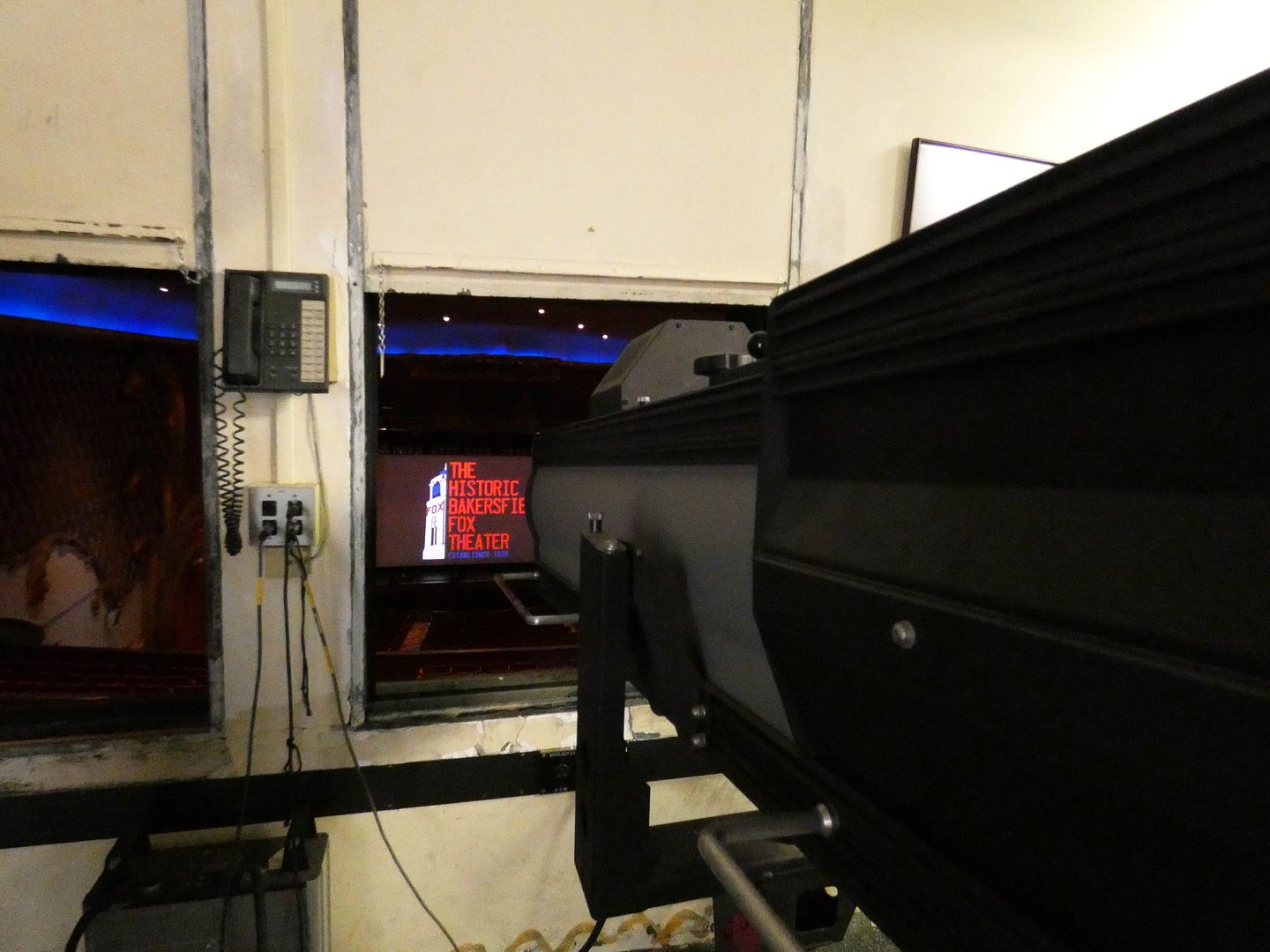
...where we got another unique view of the stage and auditorium.
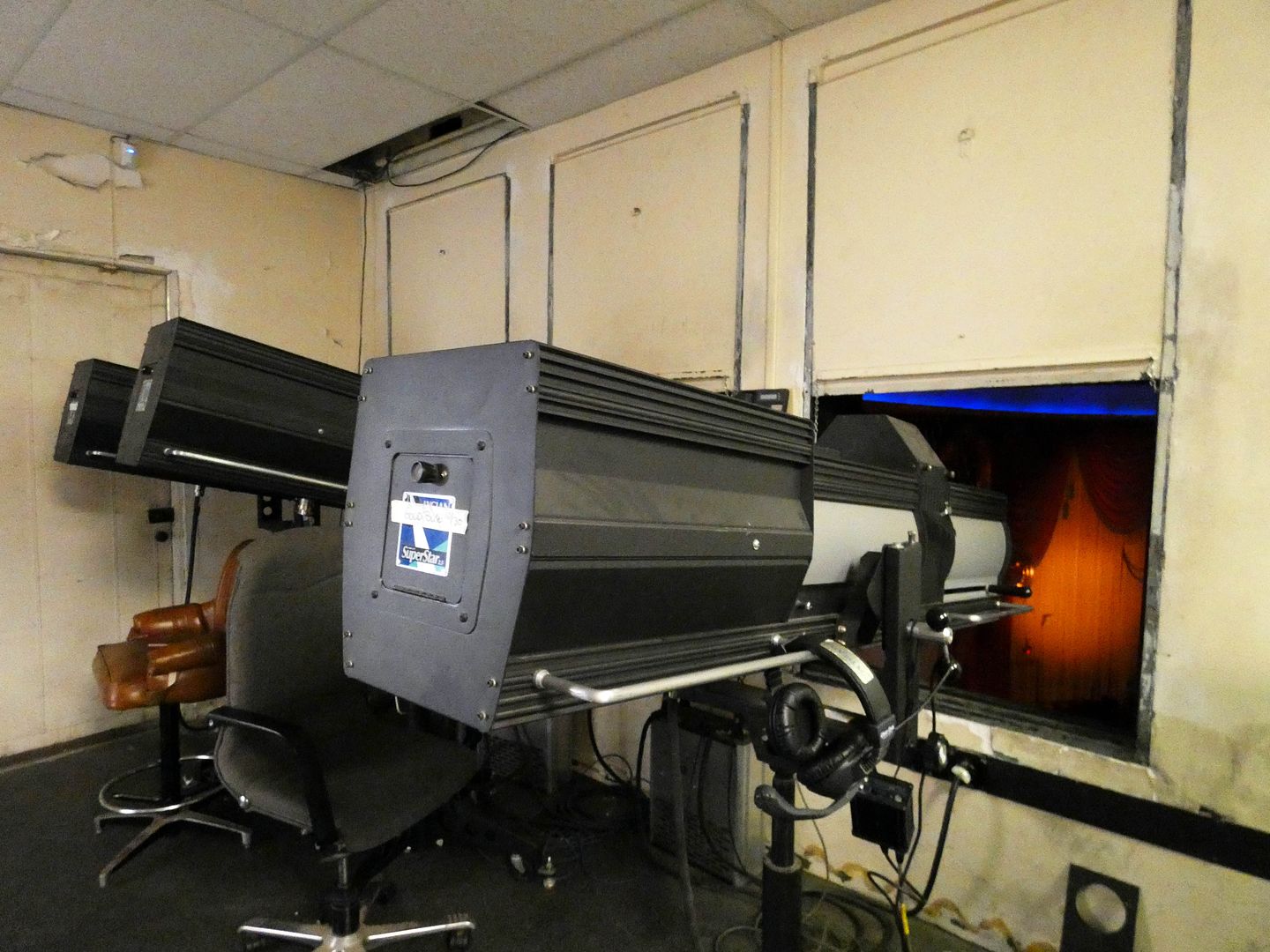
The projectionists still use the original dumbwaiter system to transport film cans for their 35MM screenings (like The Roaring Twenties, which they screened after our tour). The bottom station is located to the left of the concessions stand.
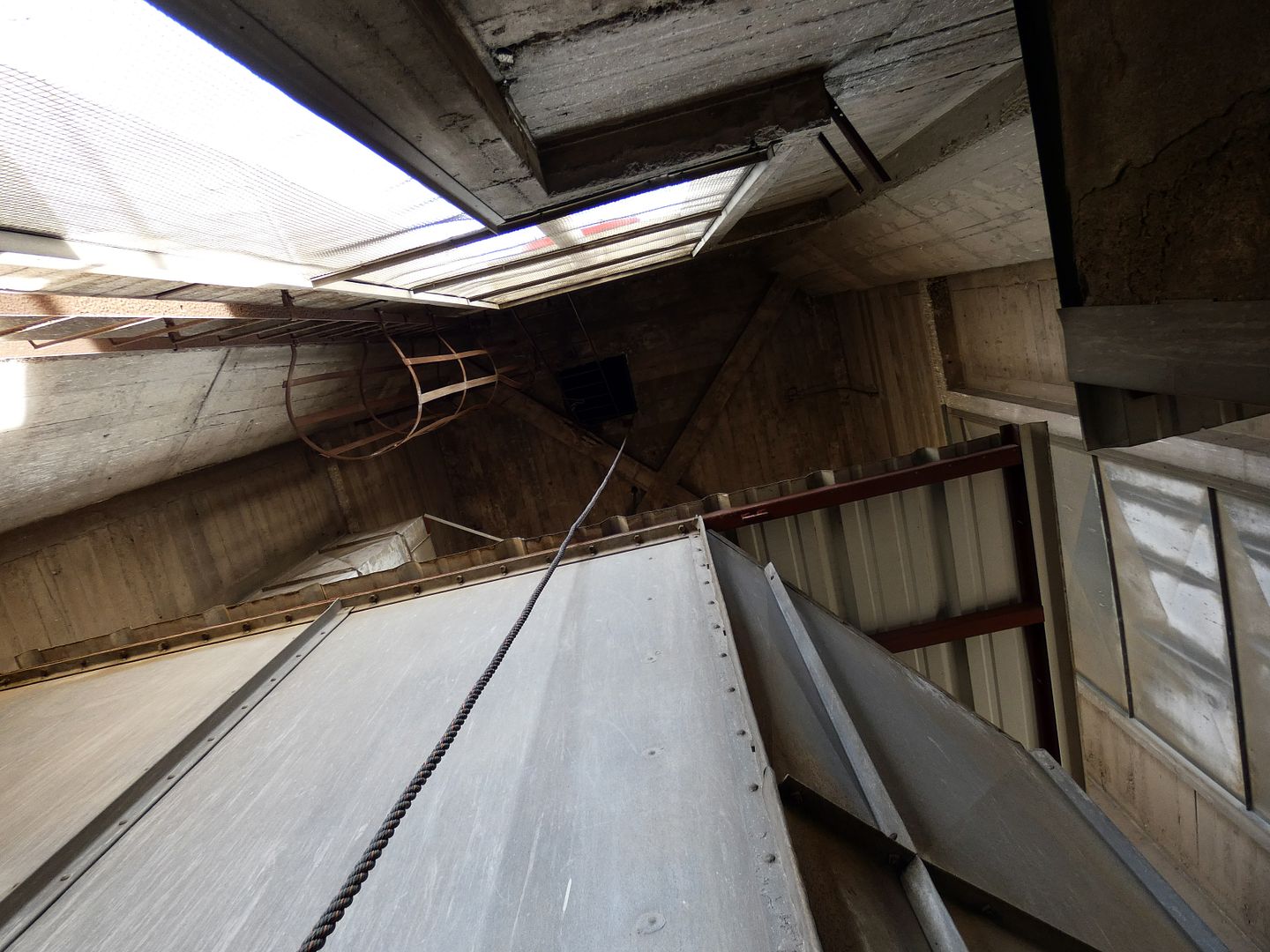
Perhaps most thrillingly...
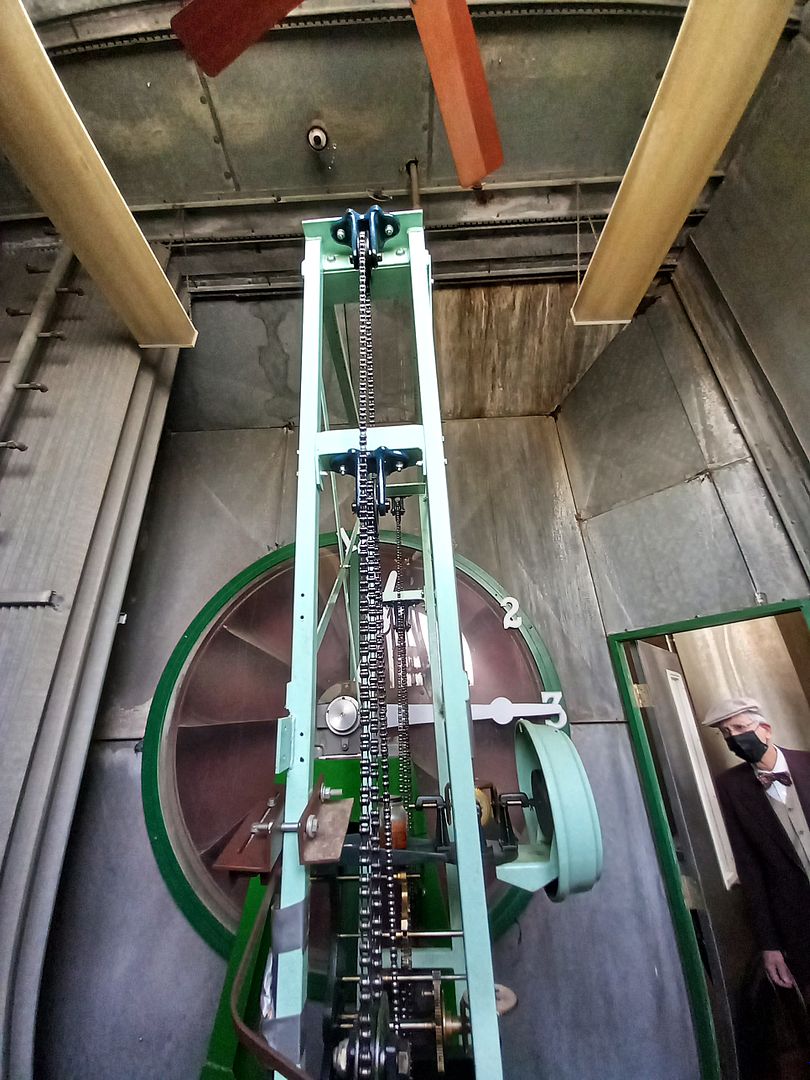
...we got to visit the bottom of the clock tower...
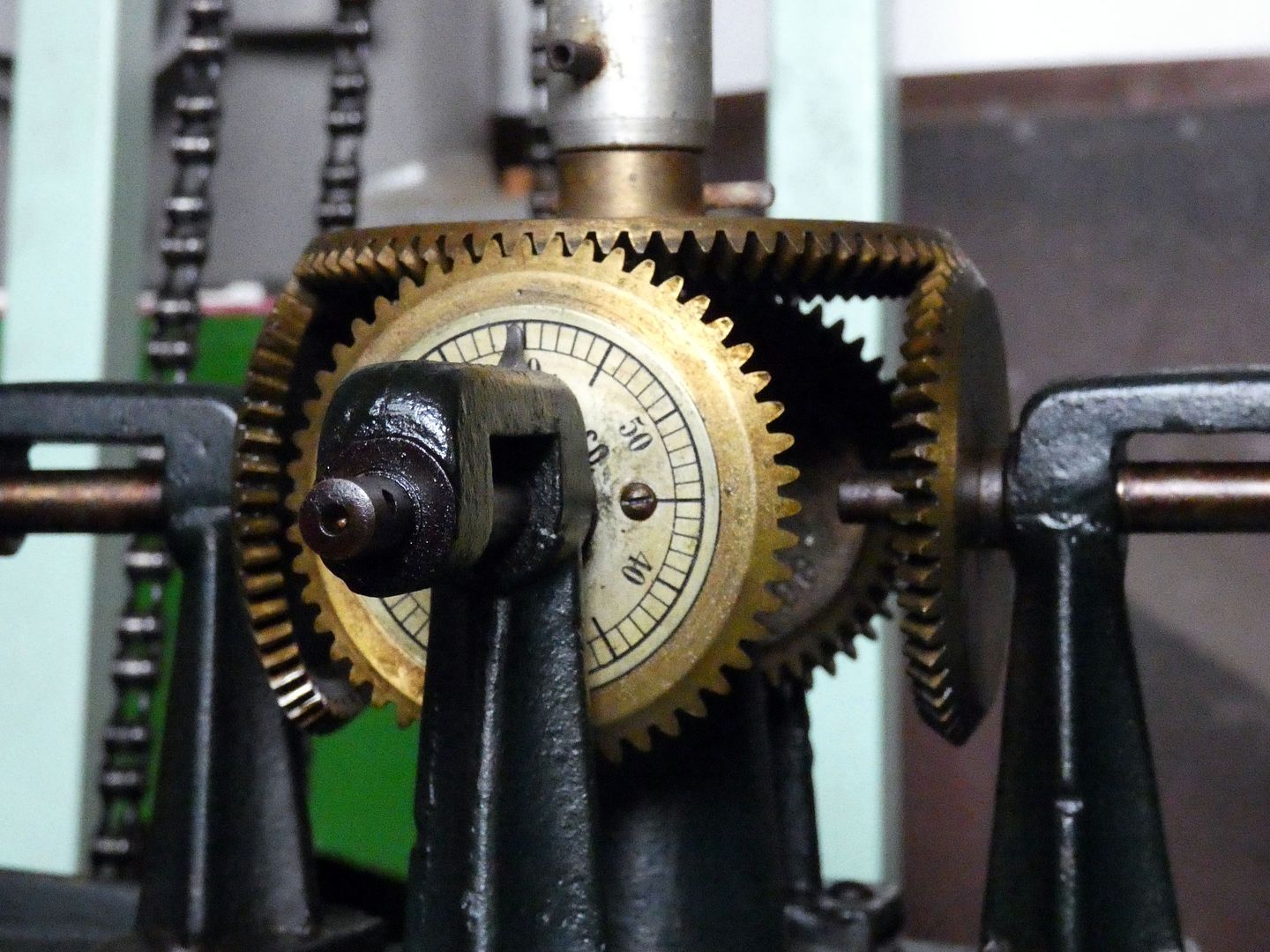
...where we got an up-close look at the mechanisms that keep that neon clock running...
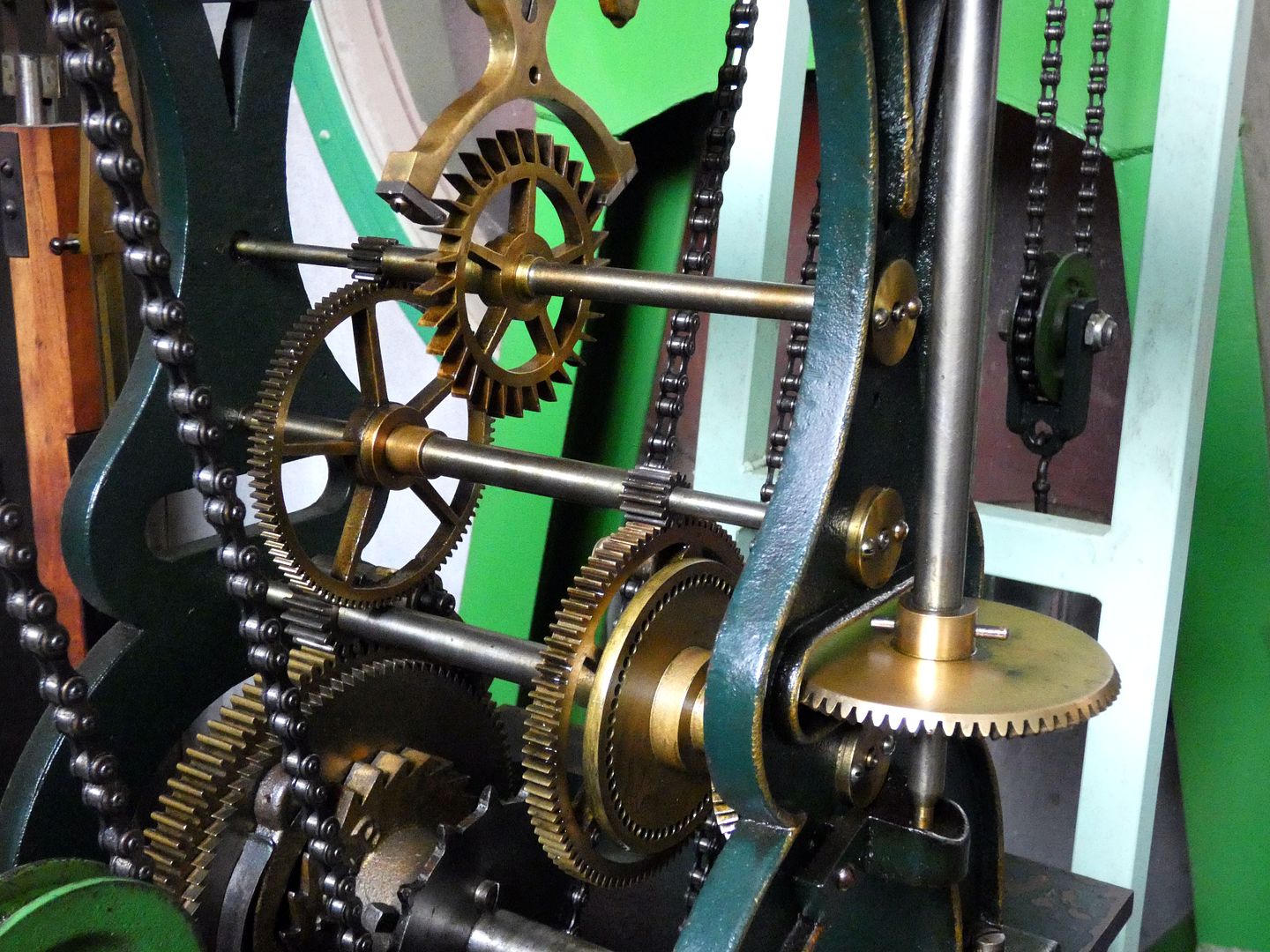
...which is still bafflingly mechanical.
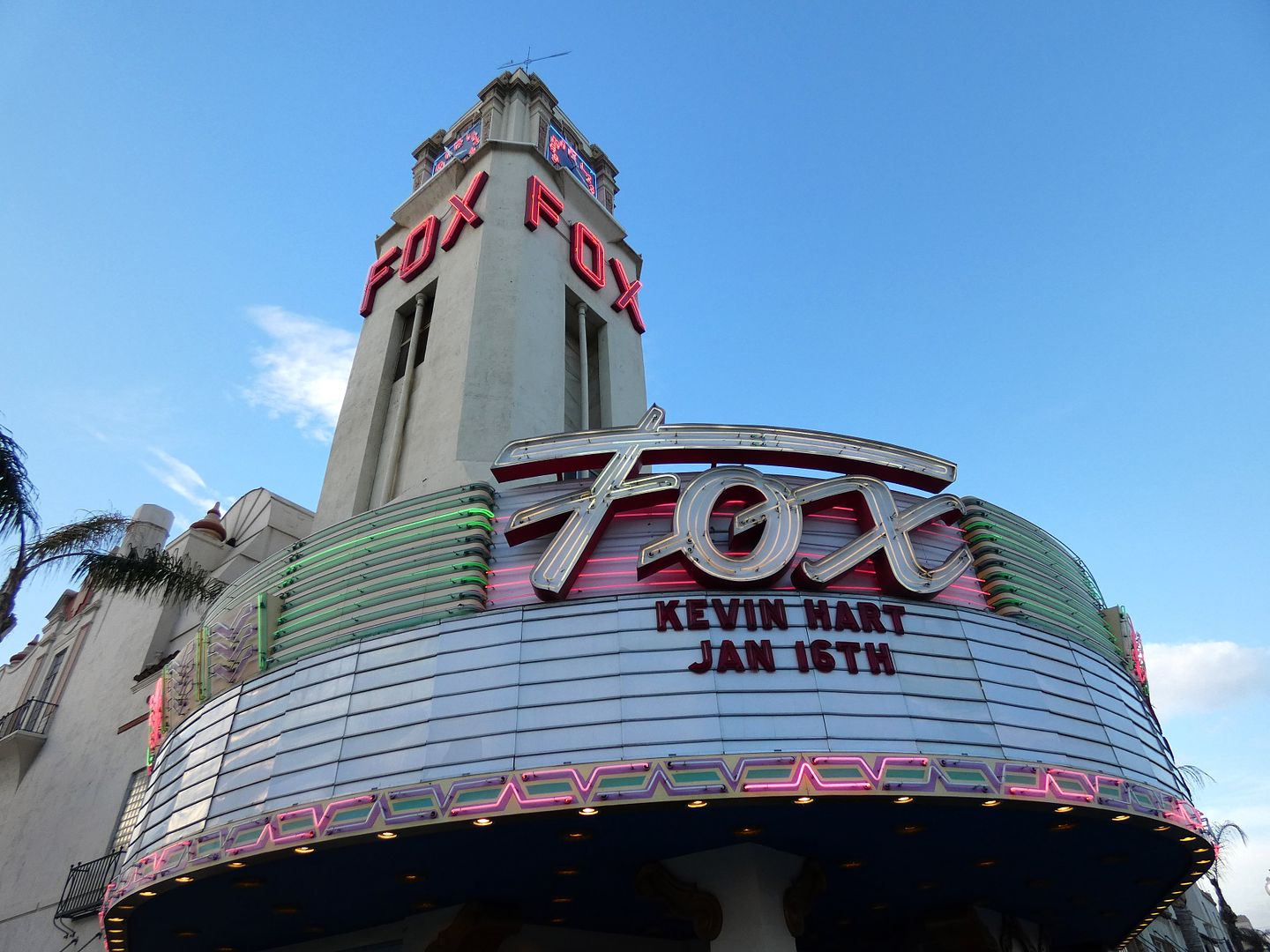
As our movie ended, we exited the theatre just in time to see them switch on the marquee and tower neon...

...which, of course, had already served as a beacon for us the two prior nights out in Downtown Bakersfield, finding our way to the tiki bar and back to the Padre Hotel.

No comments:
Post a Comment